June 12, 2022
Martha O'Kennon
This weather continues cooler than I recall in recent years. My friend Mary-Ann Cateforis sent me an article which contained another article, calling the cooling effect we are undergoing an extended La Niña pattern. Does it make me feel better or worse to know that the cooling is because of something? I'll have to wait and see!
We are in the midst of a Goutweed blooming. I've told you before that this "ground cover" has really lived up to its name ever since the neighbors removed their huge Bur Oak tree a number of years ago. It attracts quite a few creatures that other plants don't attract. Here it is with a couple of Carpet Beetles that I hardly ever see in Goutweed off-season. The Cranesbill Geranium is still blooming in the side yard, as was this Japanese Iris at the beginning of this week. Now that Iris is over for the season, so you saw the last picture of it for a year.

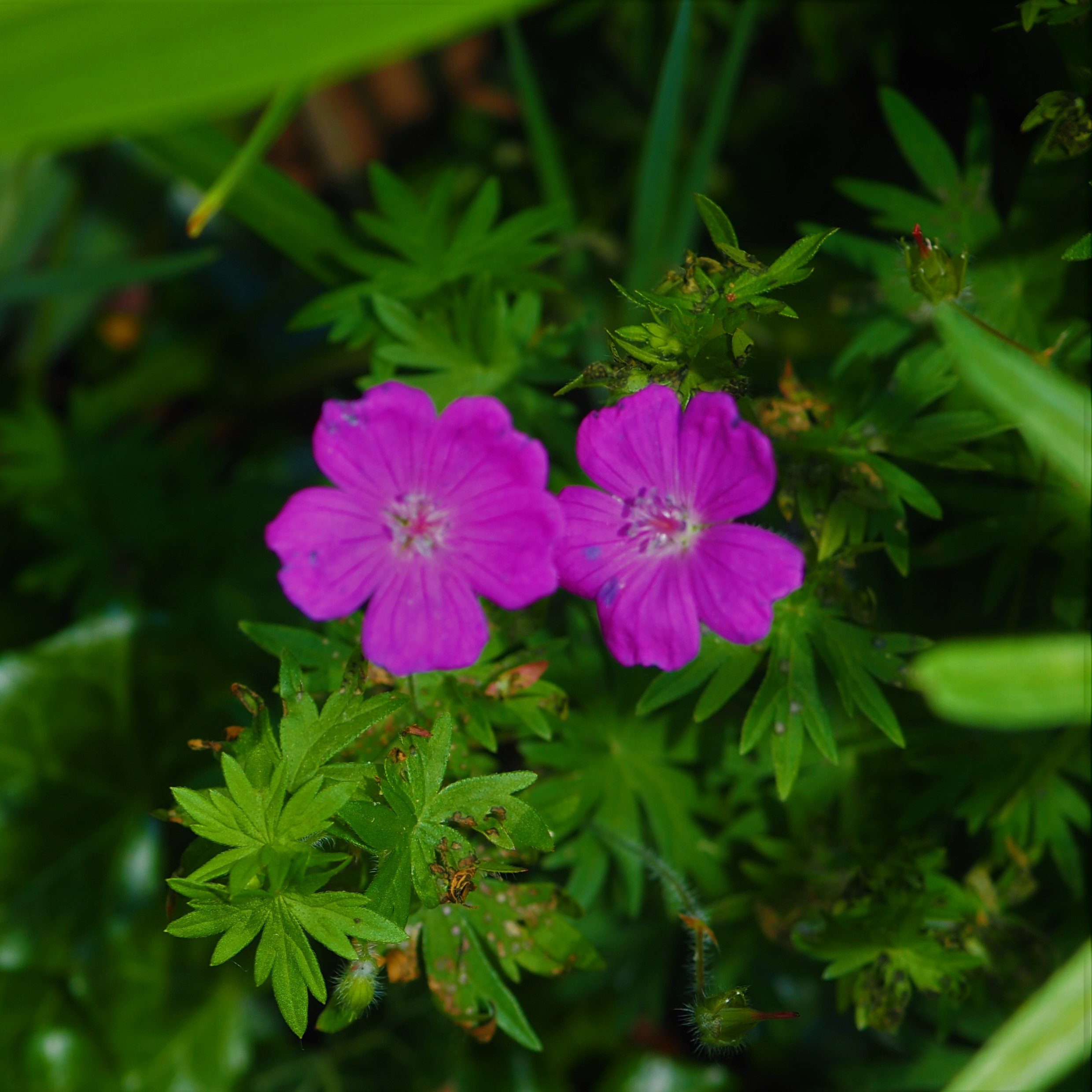

The American Winter Ant (formerly the False Honey Ant, etc) is doing fine in the yard, and especially in the Goutweed. Third may be that yellow-orange Bent-spined Acorn Ant (Temnothorax curvispinosus) or maybe even the Hairless Rover Ant, which we may be seeing soon as it carries out its nymph-nannying duties in what I hope will be a teeming nest of Keeled Treehoppers. For now, it is a yellow-orange Ant in the Goutweed!
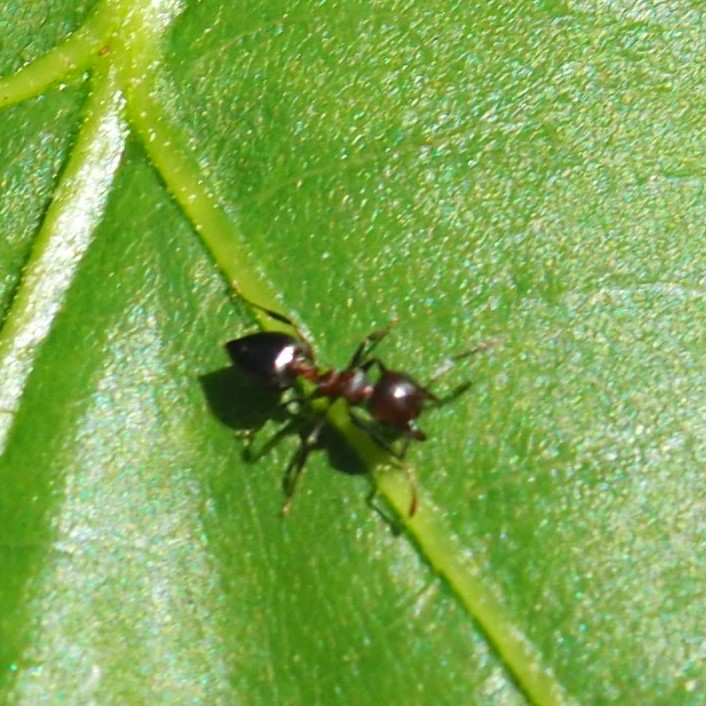
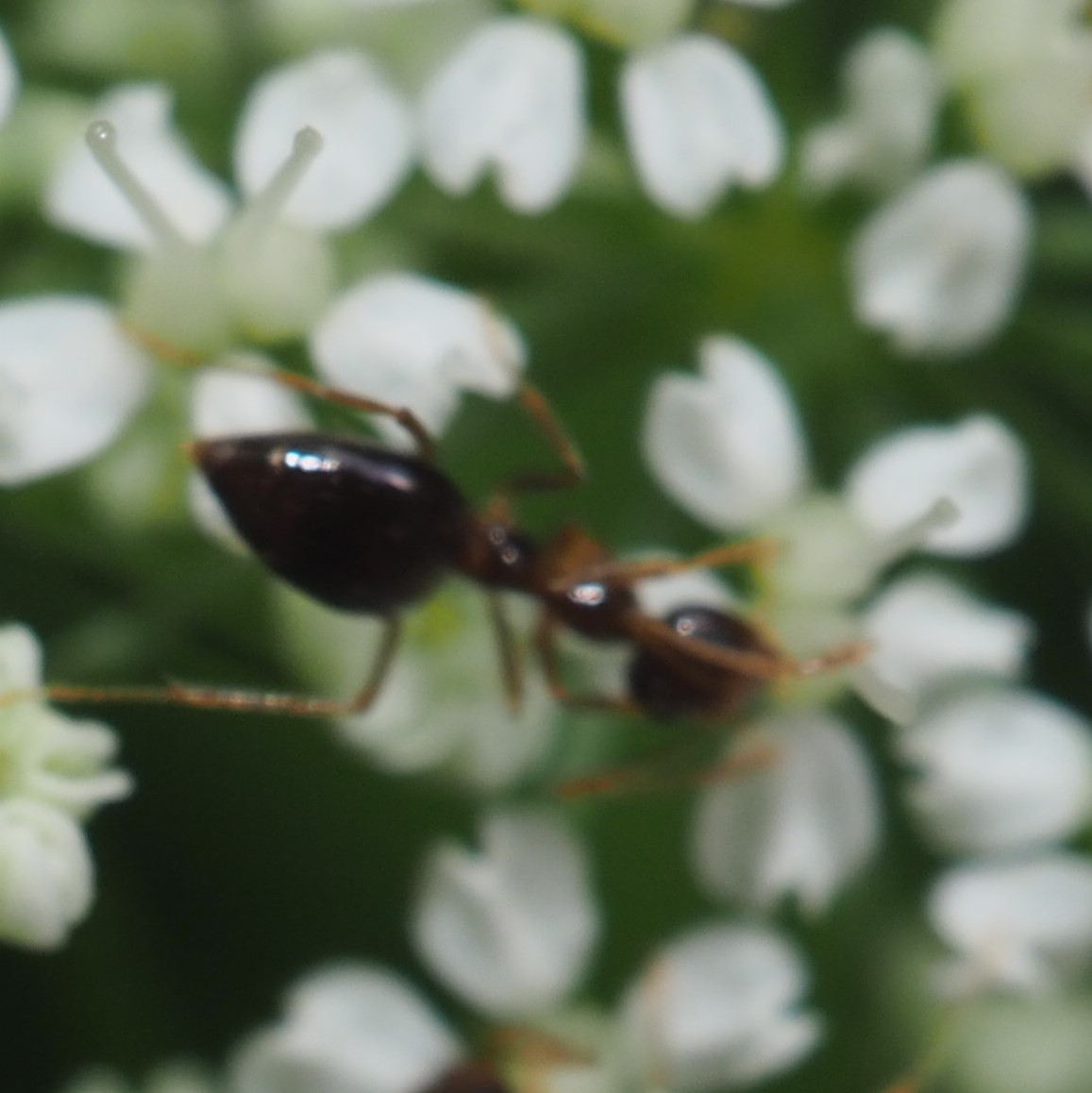
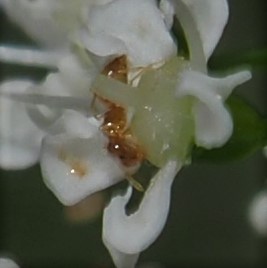
There were some surprises. One is this tall Peony plant that I saw for the first time in the FRONT garden, after watching for years to spring up again in the BACK yard. Climbing up its stem, supposedly to begin unstitching the edges of the flower itself, is some kind of black ant. Second has a substantial red section, so it is probably a Nearctic Ant, the former Smaller Carpenter Ant. Third seems to have the typical back-of-the-head pattern of a member of the Lasius genus.
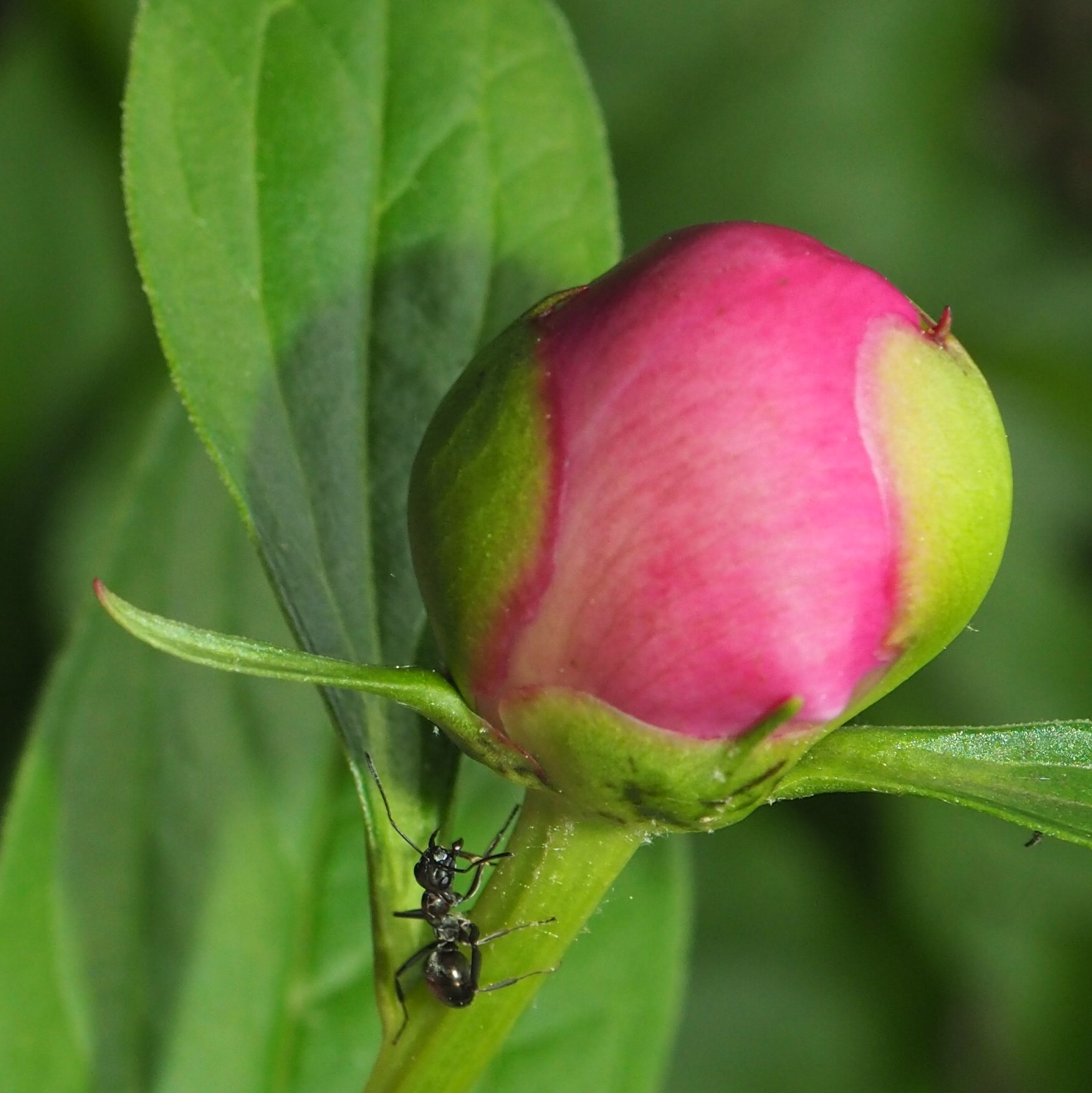

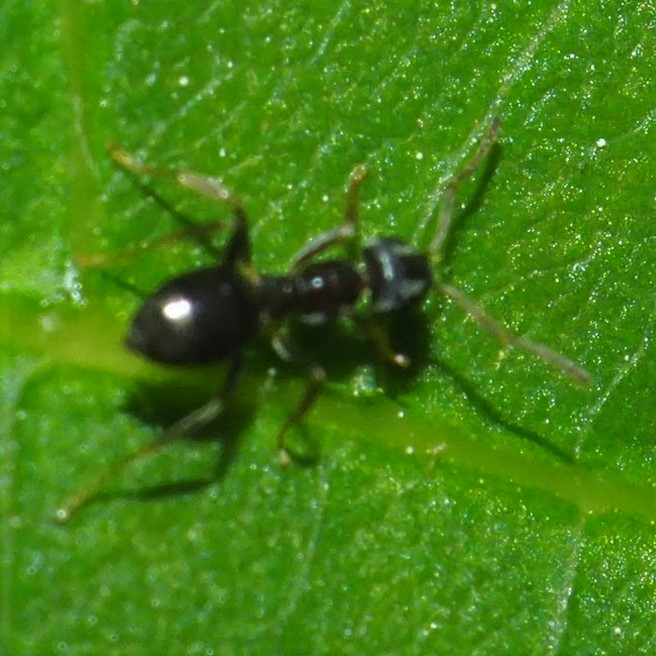
Let's see, were there any Bees this week? Silly question, as there usually are a few, but fewer still identified to species or even to genus. The Goutweed invited this first one, and also the second (as a Masked Bee). Picture 3 shows not only a Bee (or maybe Wasp) but also one of the yellow Ants! And picture 4 looks like that Narcissus Bulb Fly we met last week, a great Bee Mimic.
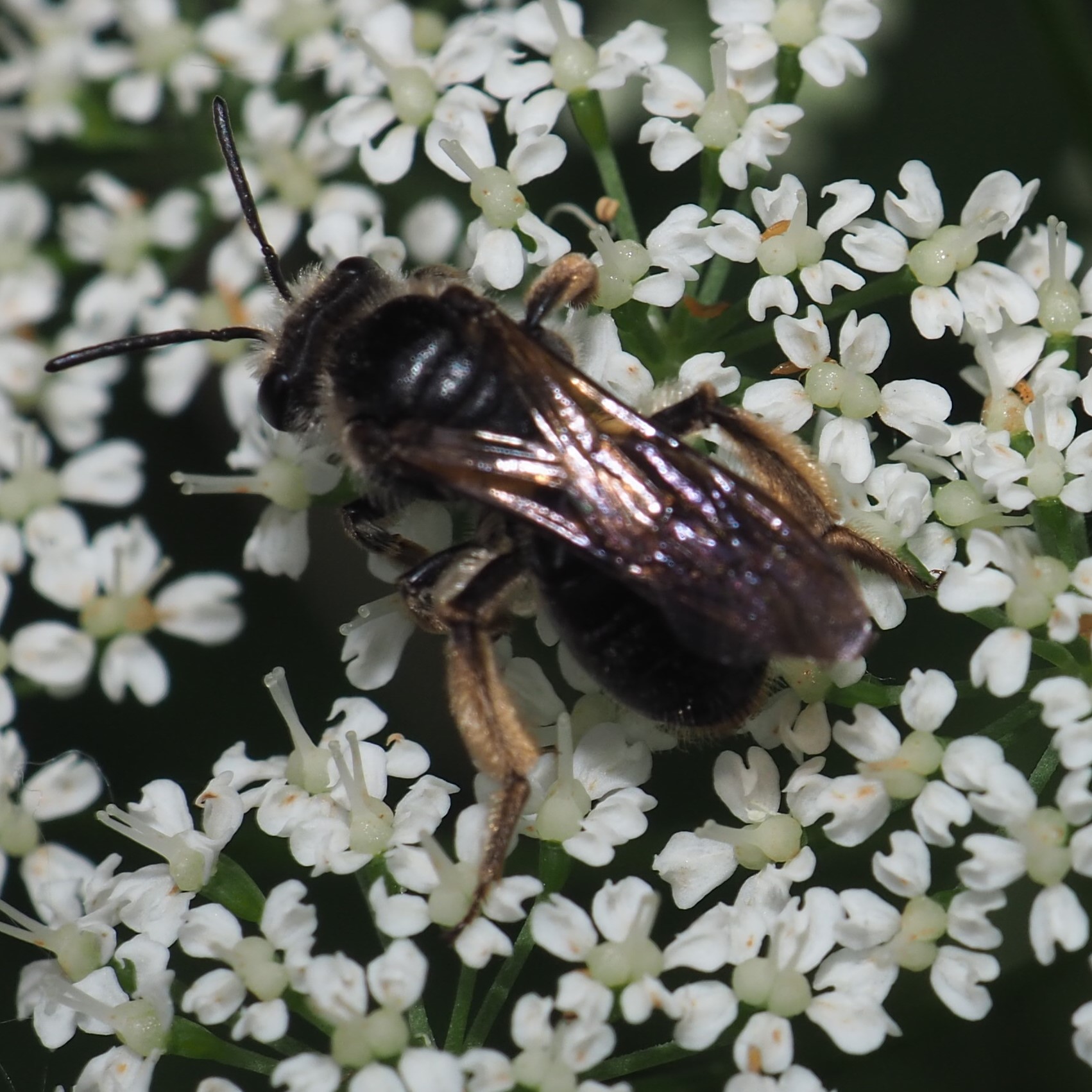
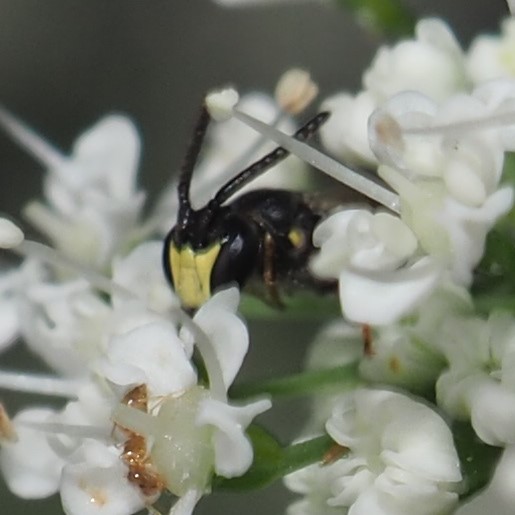
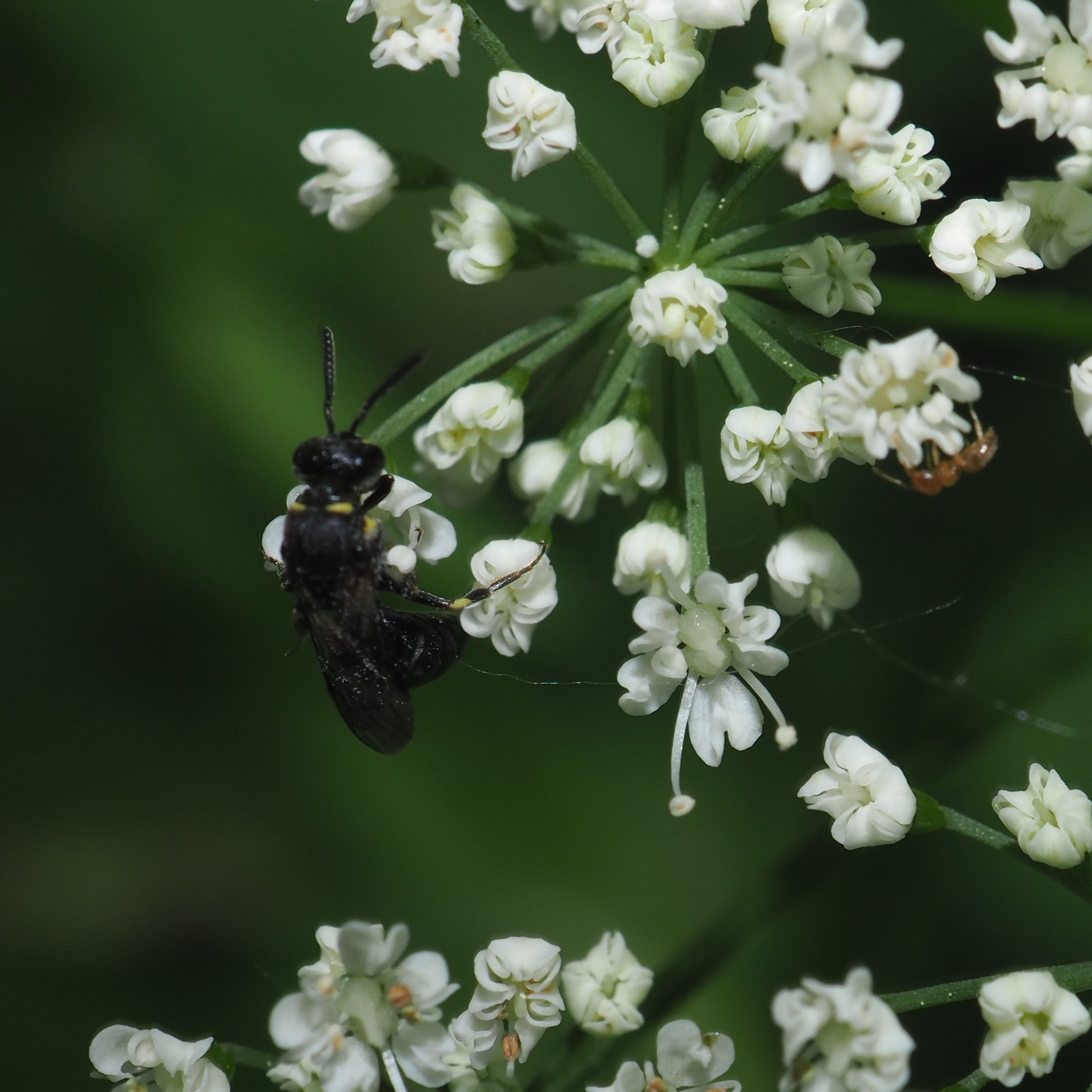
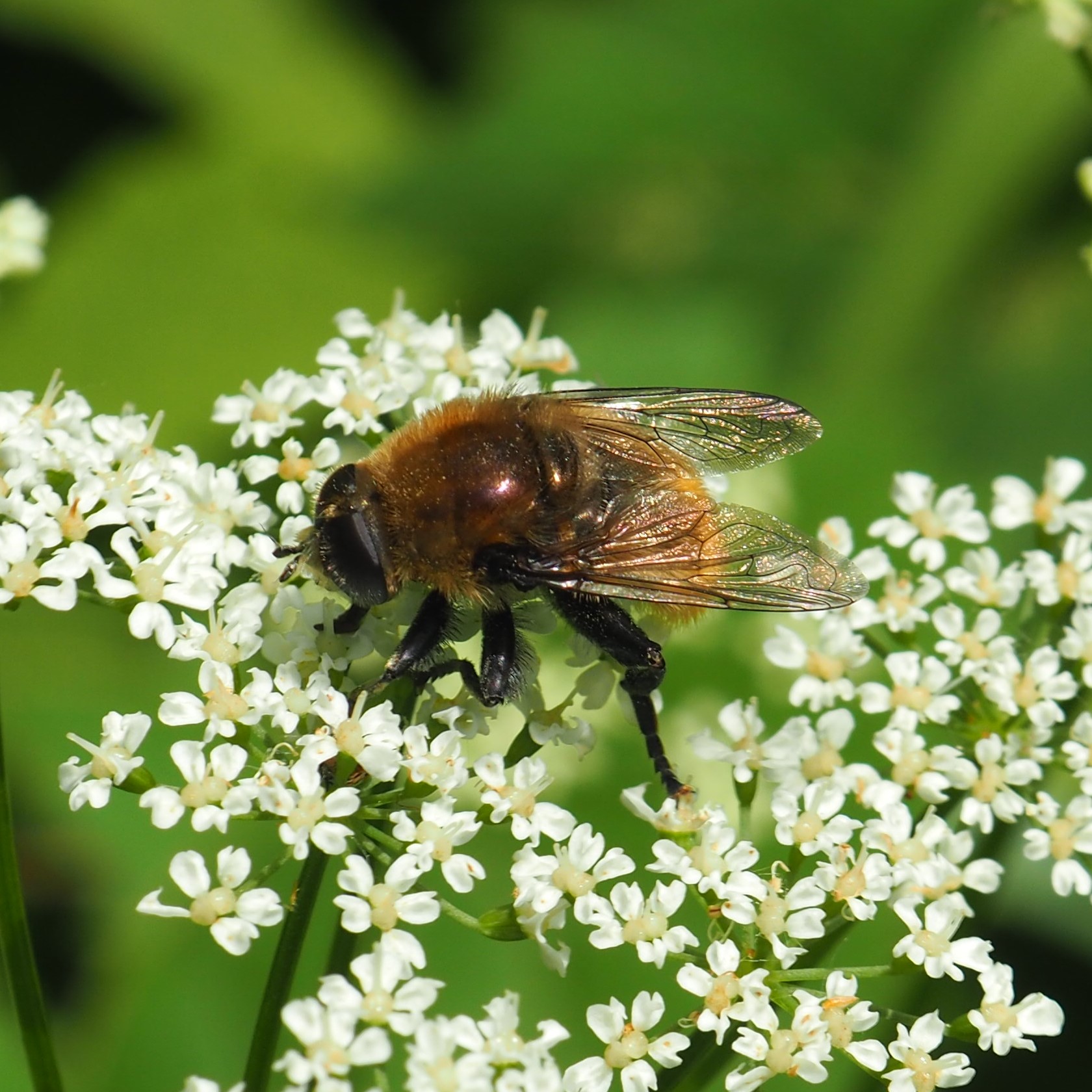
Some of the Beetles are extremely gorgeous but so small that you have to enlarge them in order to see that beauty. Here is the Eurasian Red-and-black Melyrid (Anthocomus equestris). Picture 1 shows it as it appeared last week, but picture 2 shows this week's variation, which I submitted again in order to be sure they were the same.

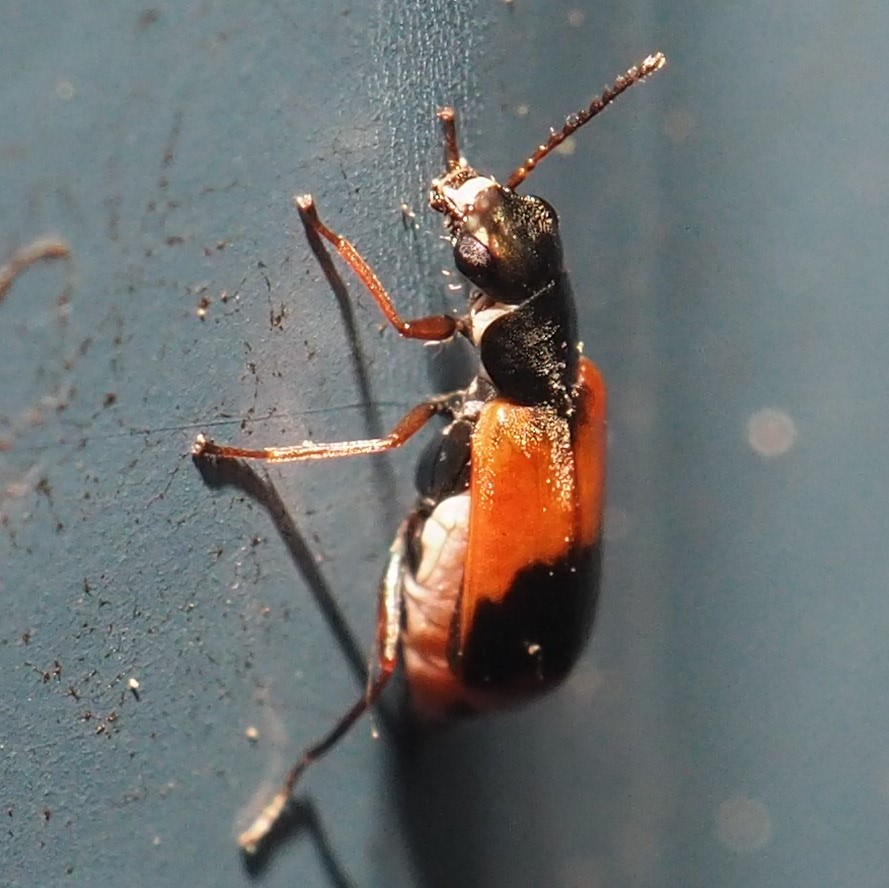
Here is a little Beetle, which I don't recognize; and two different Weevils. There are so MANY Weevils! The last one is the Redbud Bruchid.

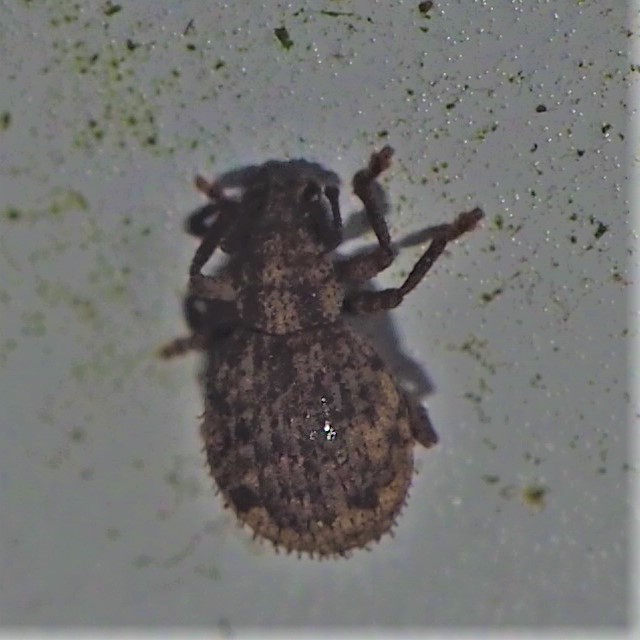
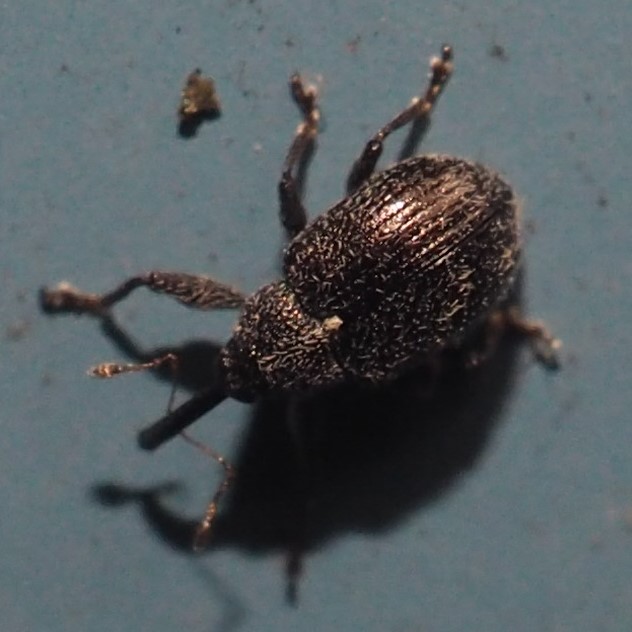
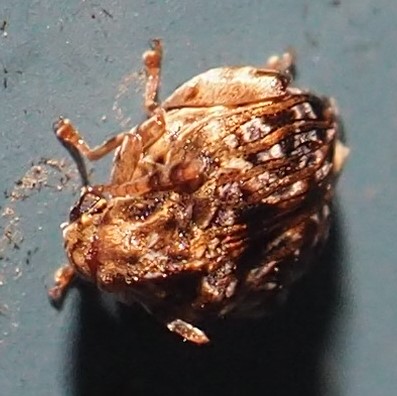
Surprise! I didn't see a single Assassin Bug (Zelus luridus OR Z. tetracanthus). So we start with the single Leafhopper, Erythroneura palimpsesta. Second is another young Leafhopper, possible the beautiful red-and-blue one we will be seeing more as time goes on. I'm guessing from the yellow streaks on either side. And third is the moulted skin of another.

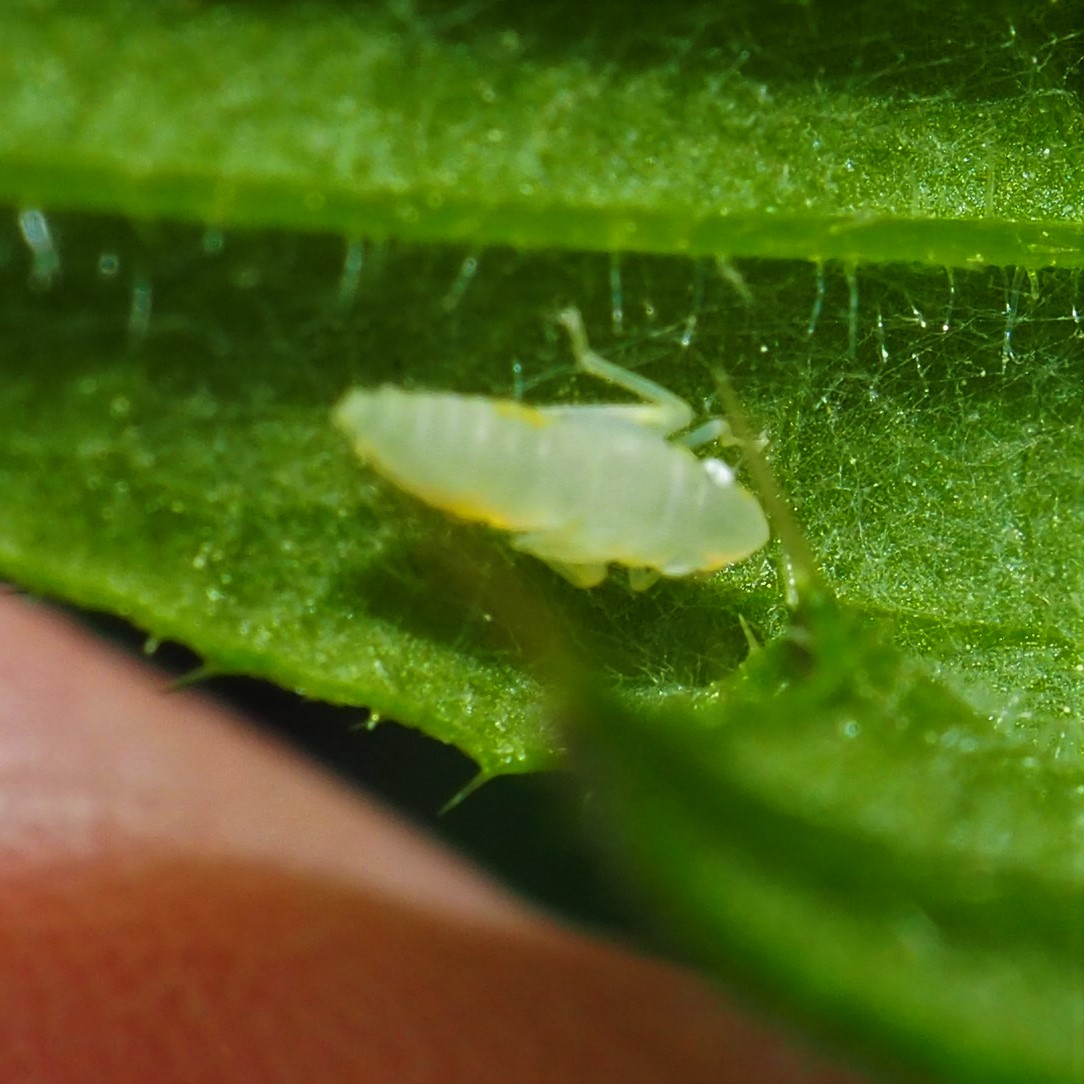
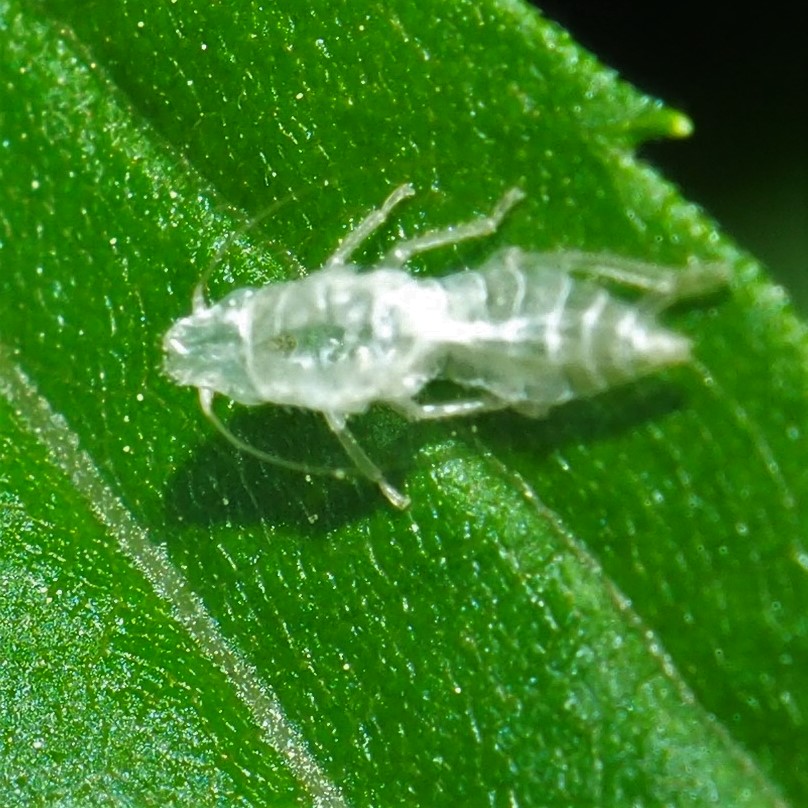
Here are the Bugs. First is a little Plant Bug. Second, lurking in the middle of the picture, is the destructive Four-lined Plant Bug. Third is another Bug, but I don't recognize it.
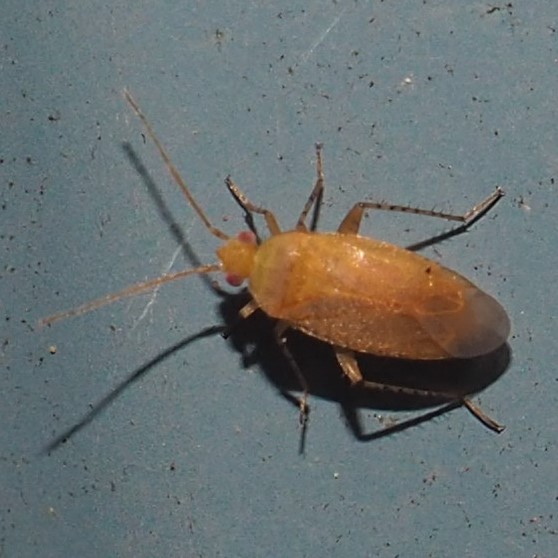
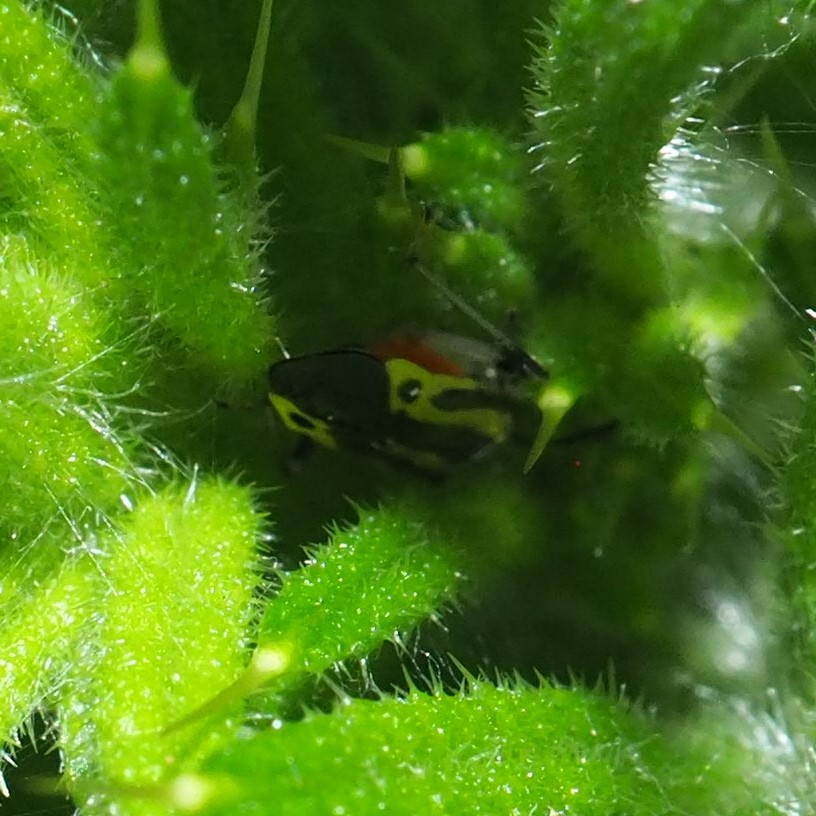
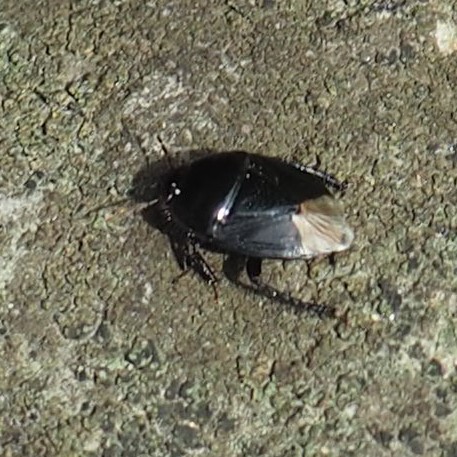
Here are two Plant Bugs of the genus Phytocoris. The pattern on these Bugs reminds me of a fabric design. Third is a Stink Bug called Brochymena arborea. The roundest one I ever saw! This fourth one I mistook for a Barklouse at first, but now I think it must be a Bug. You know, the pattern on its limbs does look sort of like Phytocoris too!

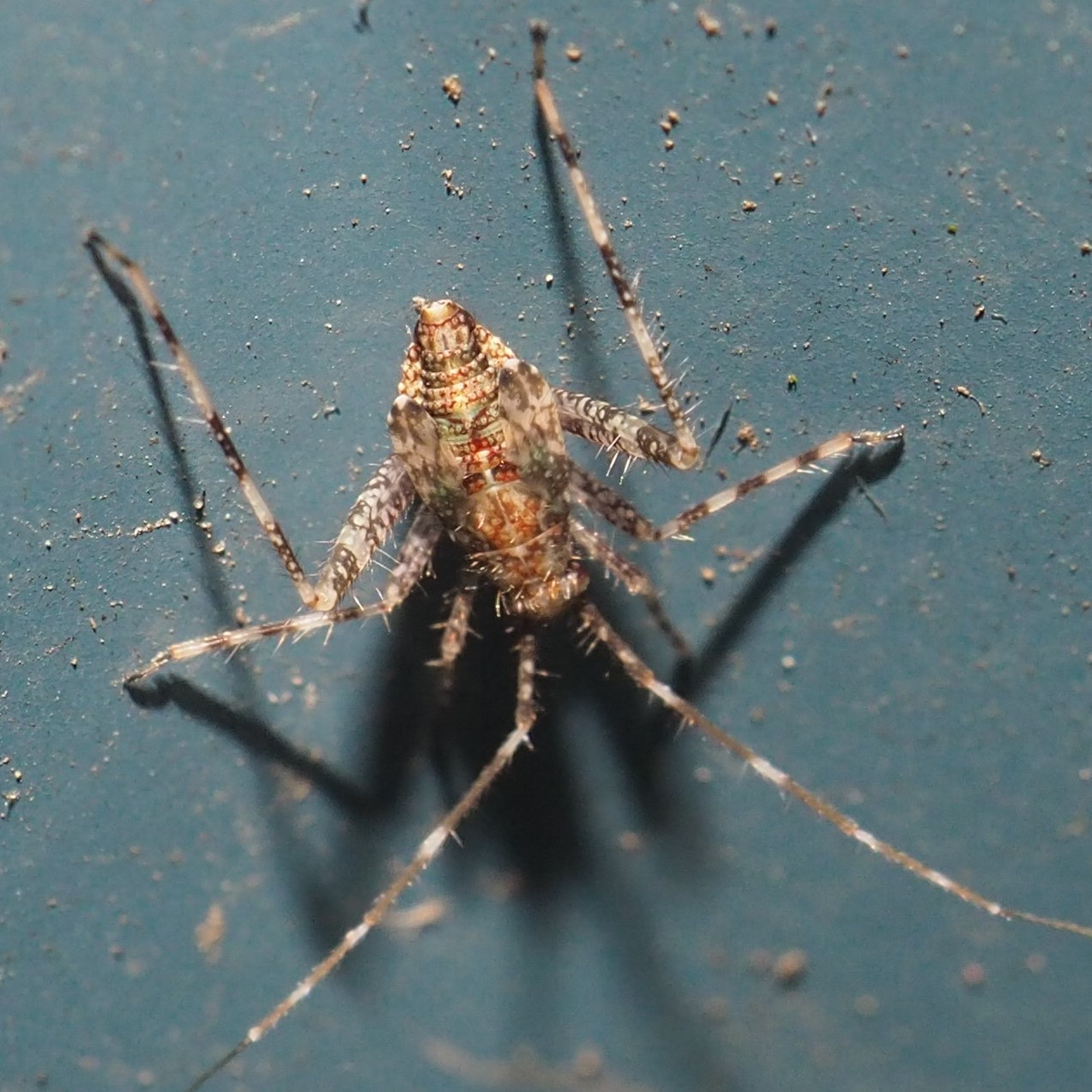
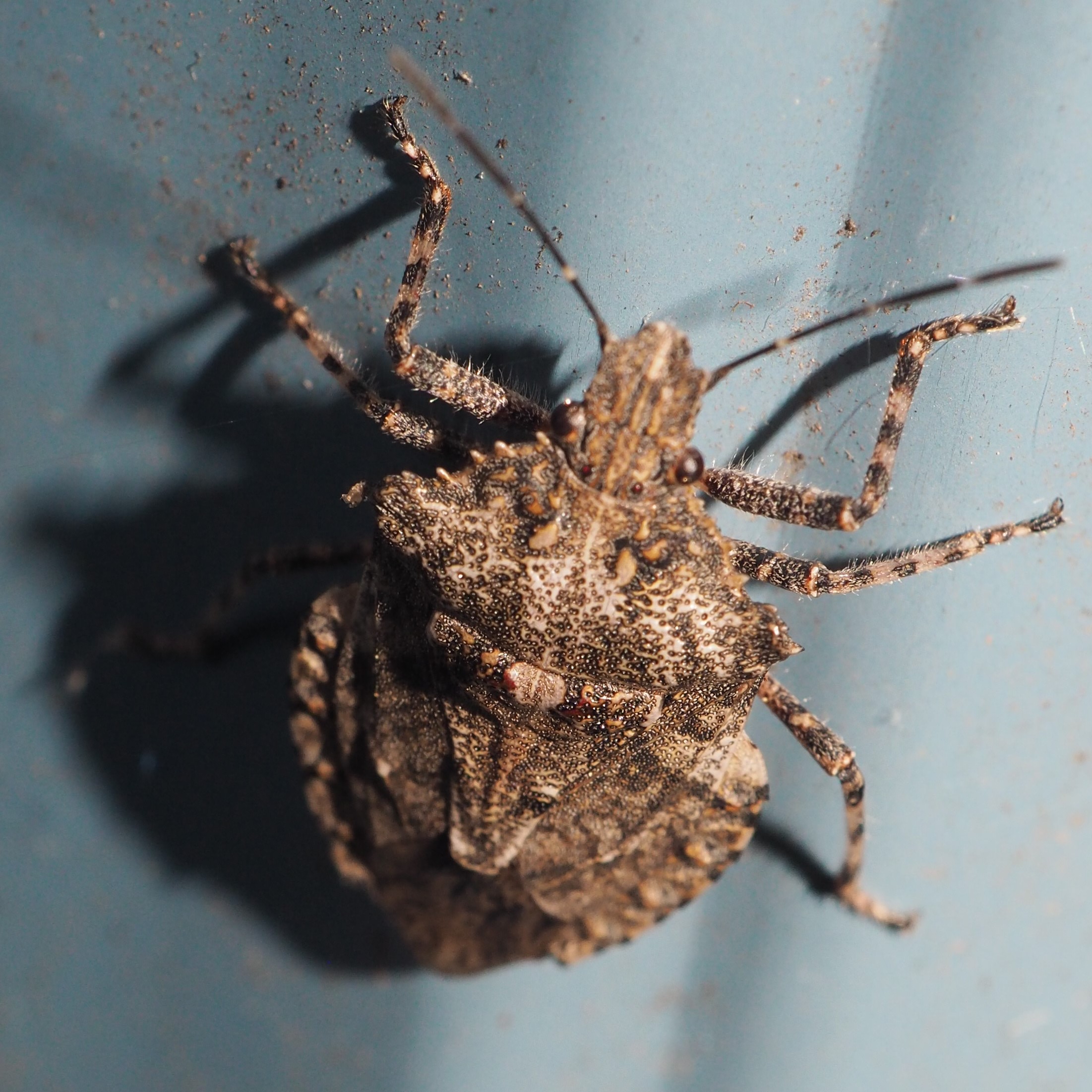
.jpg)
Let's take a look at the week's Barklice. If you recall, last week we watched a Teliapsocus conterminus nymph grow, and this week we were rewarded by seeing it mature into an adult. Then it flew away.
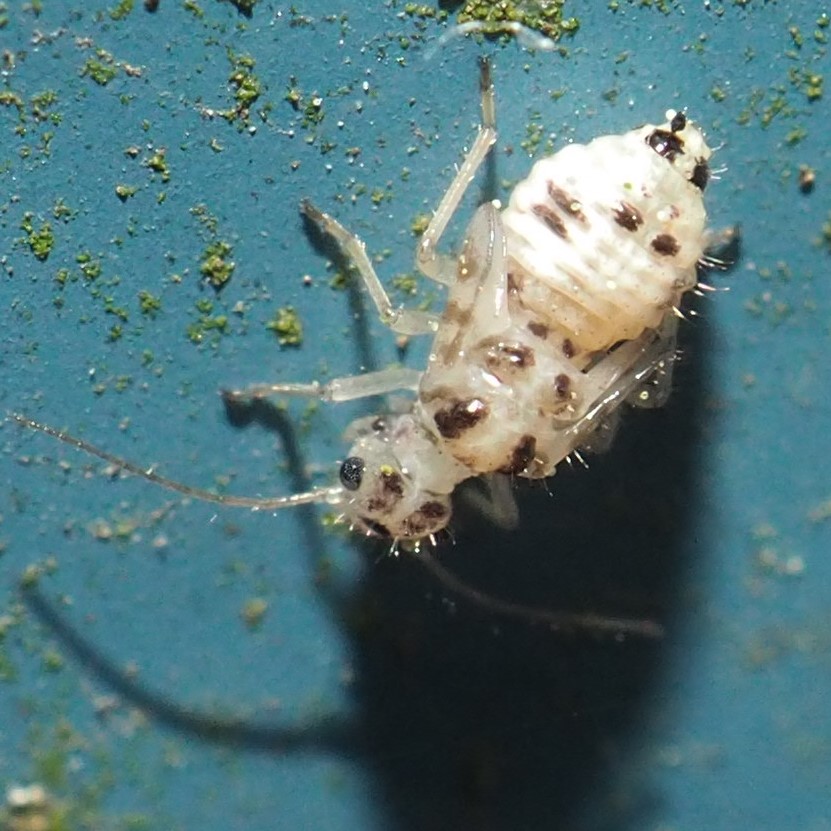
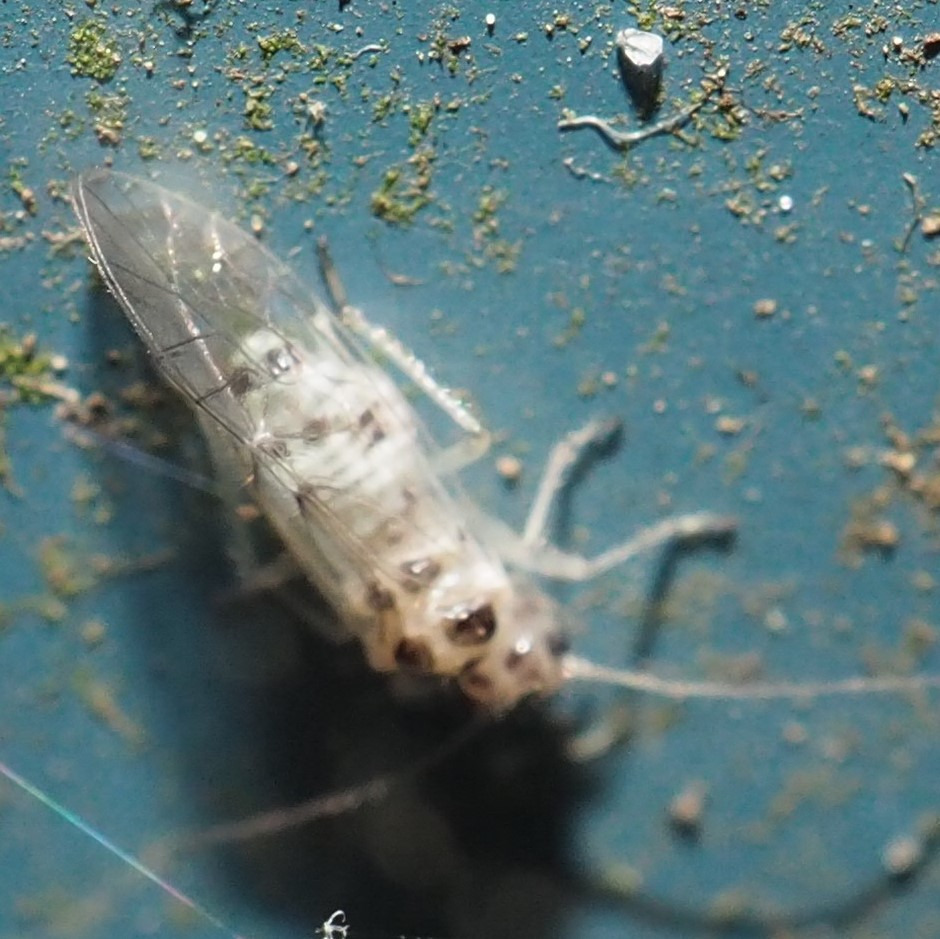
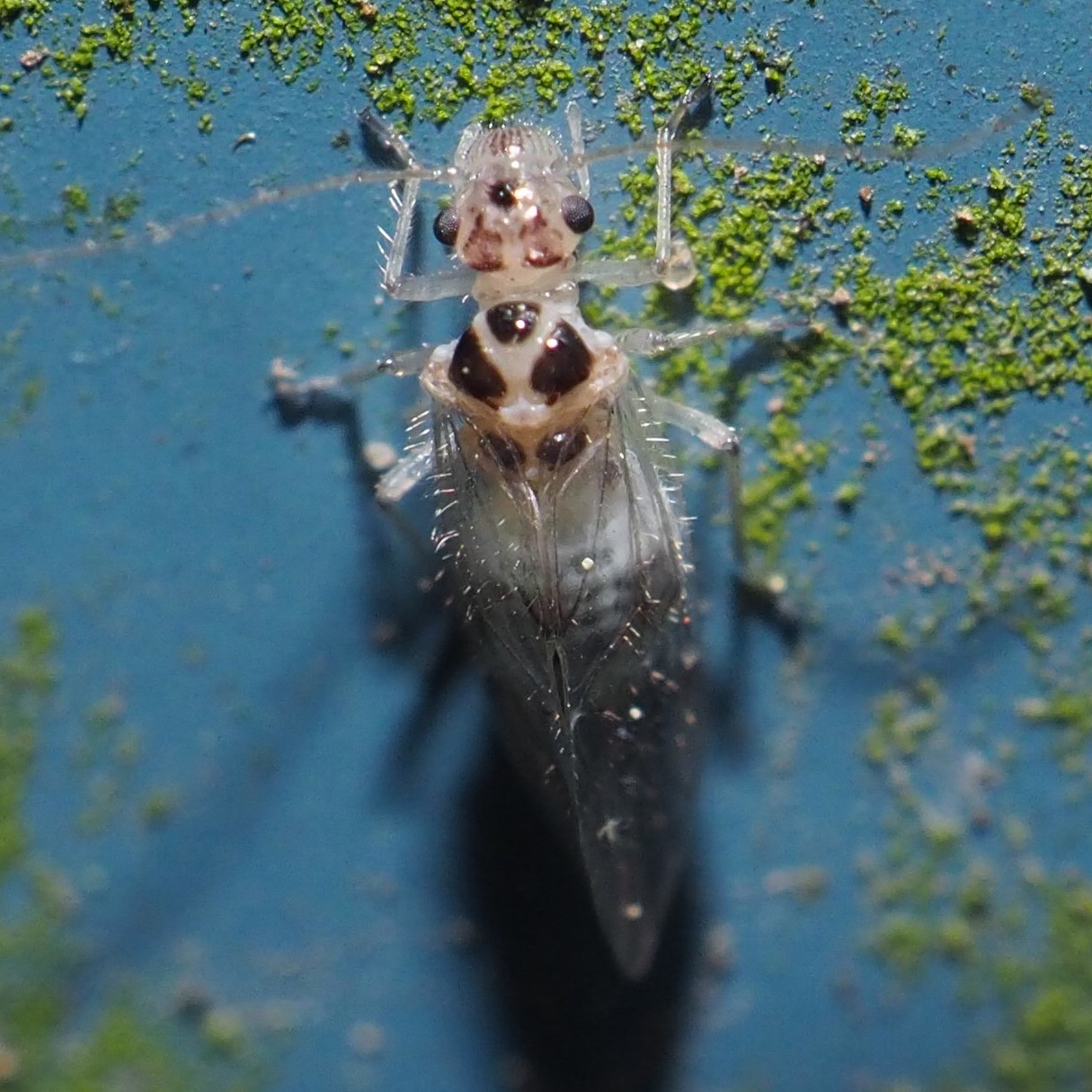
But just as one creature flies away, along may come a new one. At the beginning of this week, a long-lost but familiar friend showed up on the North Wall, about panel 1. This happens to be the place where the erosion under the Woodshop is the worst, so I'm assuming that the little fellows had grown from eggs during the winter and were just seeing the possibilities of being an open-air creation. The familiar friend is Polypsocus corruptus, the Corrupt Barklouse. Wonder of wonders, on June 9th an adult showed up on the wall a bit further to the West! I used to believe the red-eyed one with large distinct white or clear markings is the female, while the black-eyed one with more all-over black is the male. But now I'm not so sure about the eyes - Don't tell anyone.
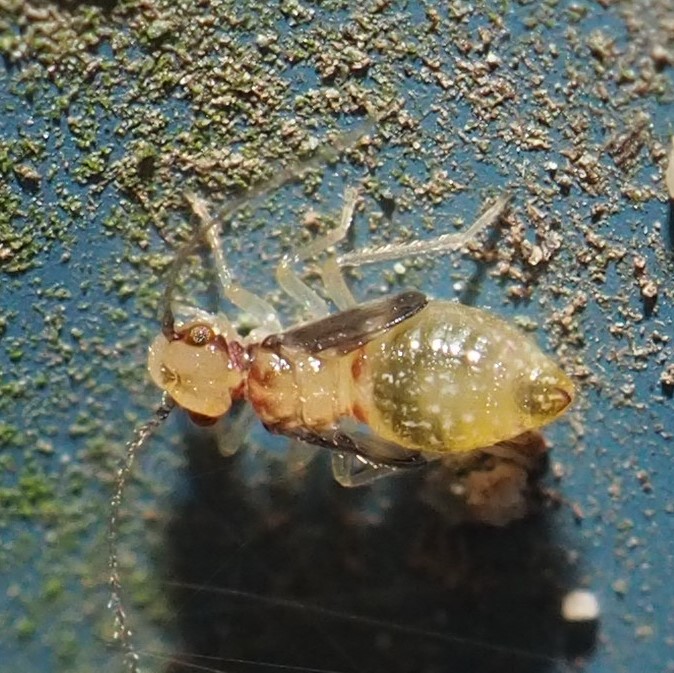
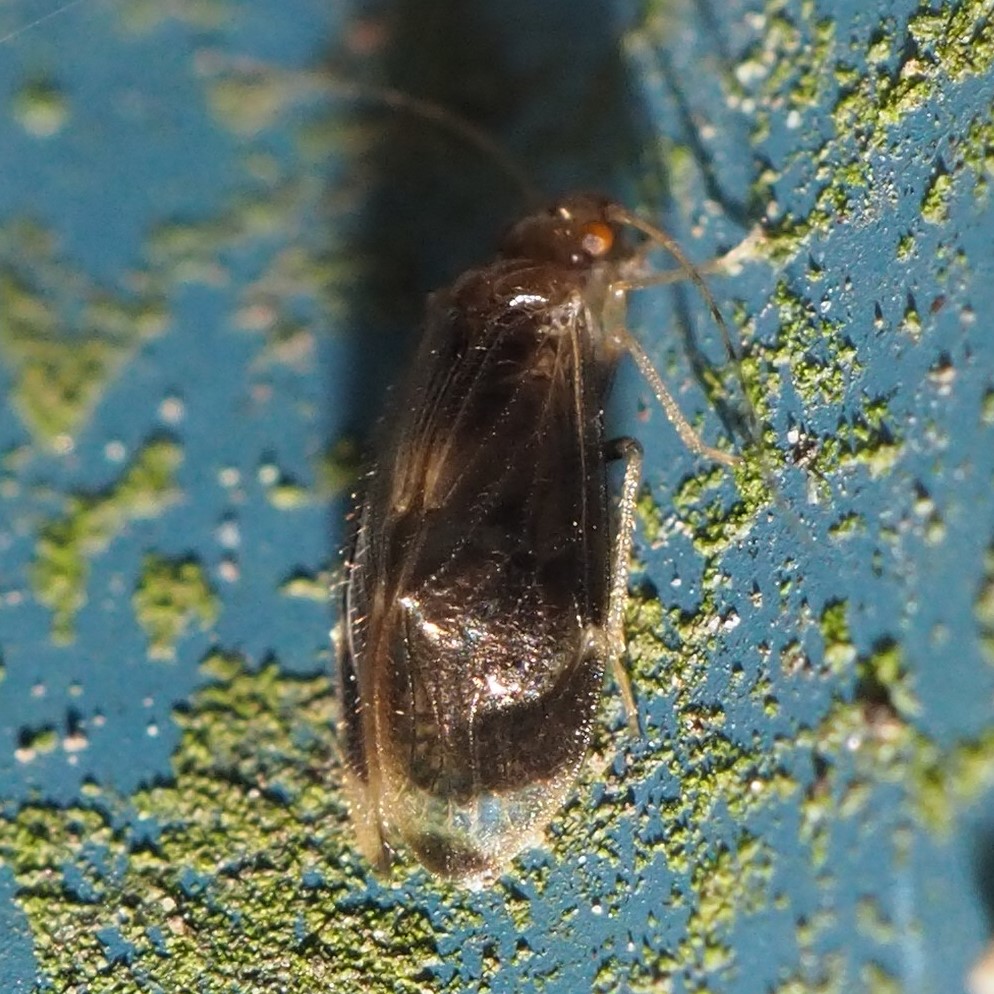
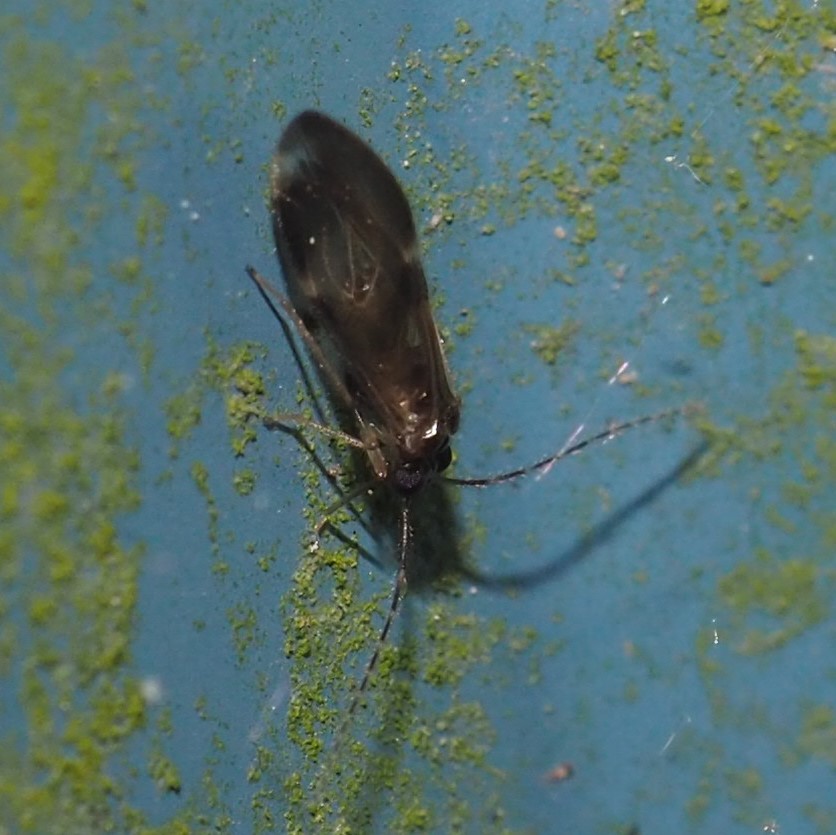
Of course, we still have our Valenzuela and Graphopsocus members.
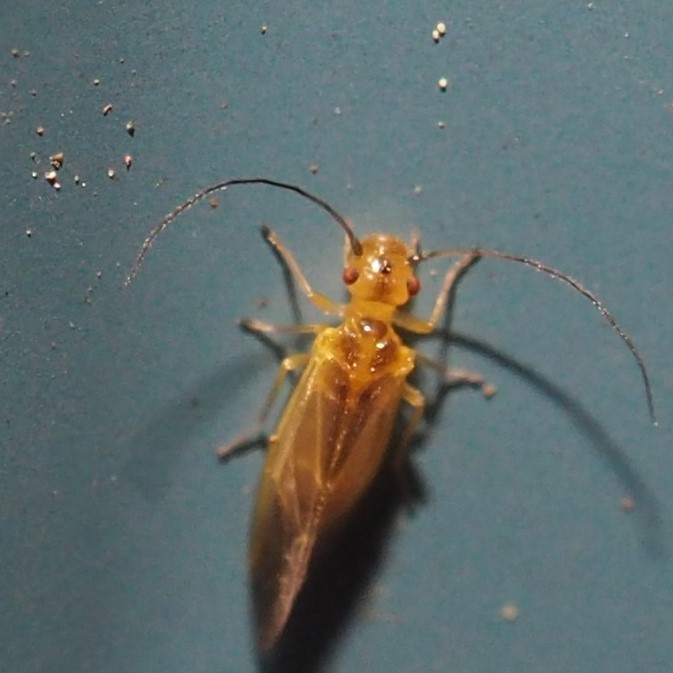
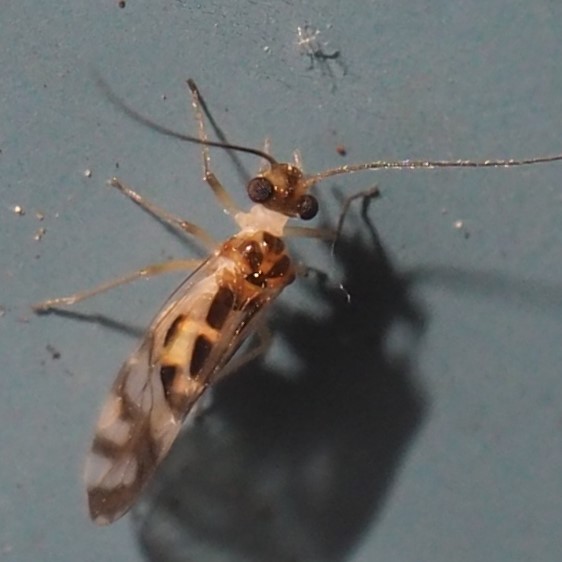
The Ebony Jewelwing Damselfly is so gorgeous, especially the male. The female is quite understated, but still spectacular. Third we see a bright blue damselfly dipping her tail into the water, laying eggs. The picture is from such an unlikely angle that I've added a fourth image from June 2, 2019.
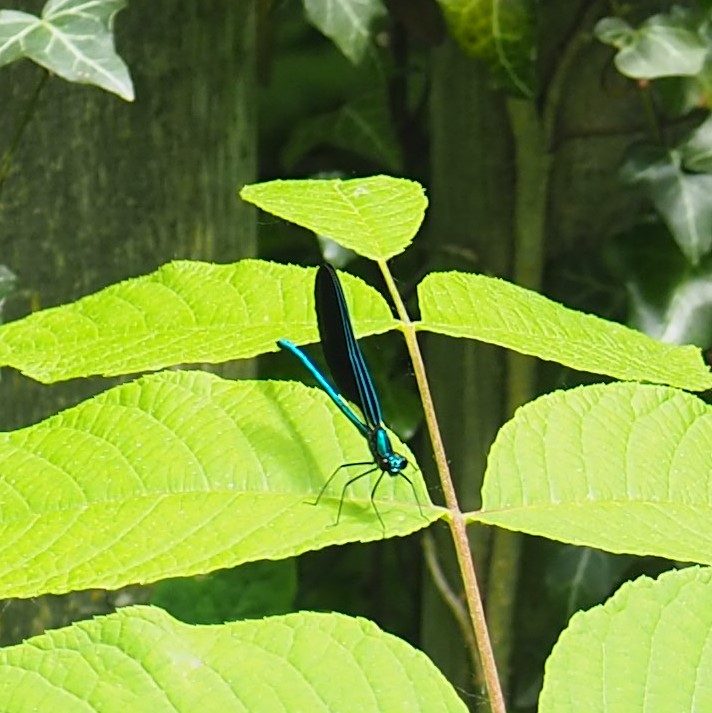
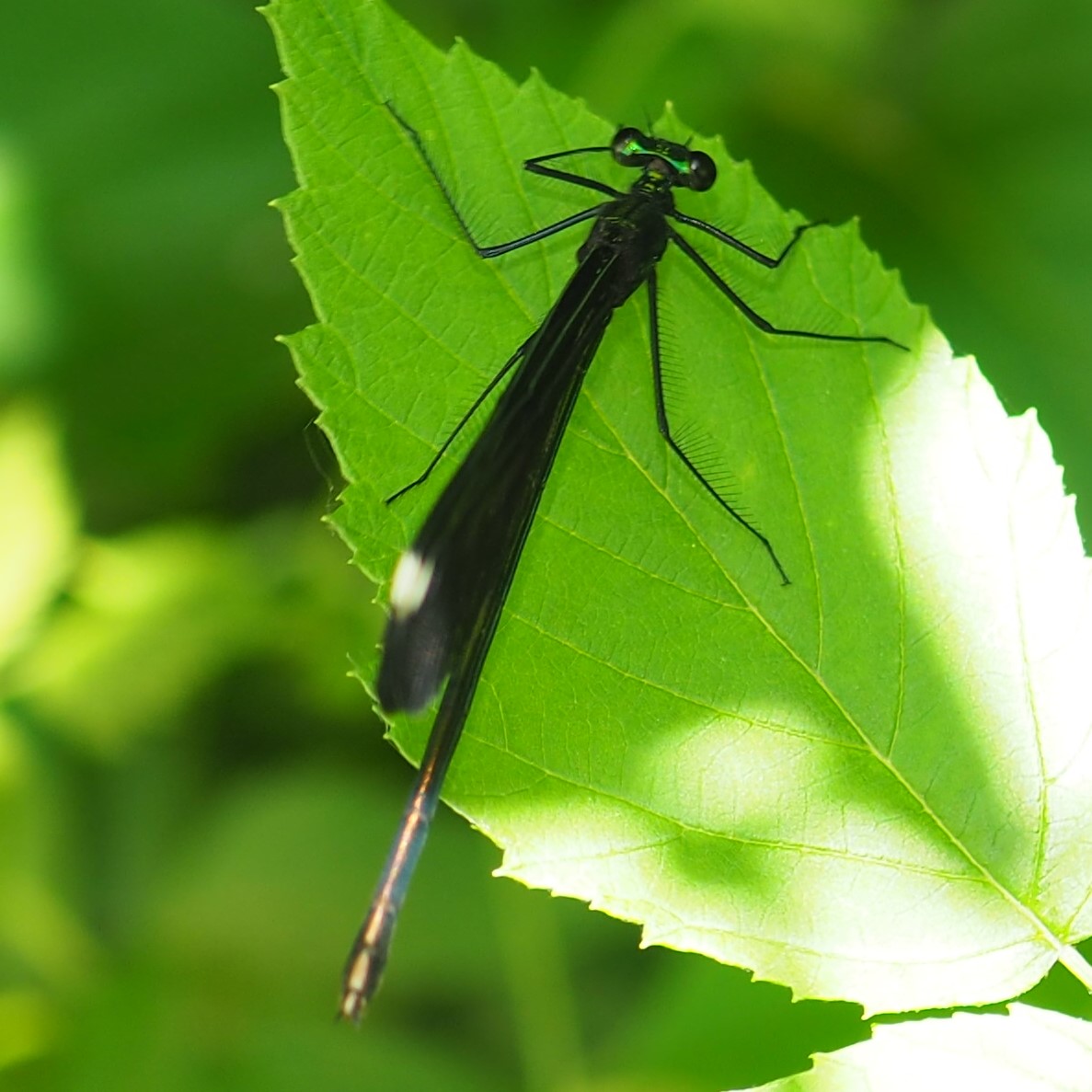
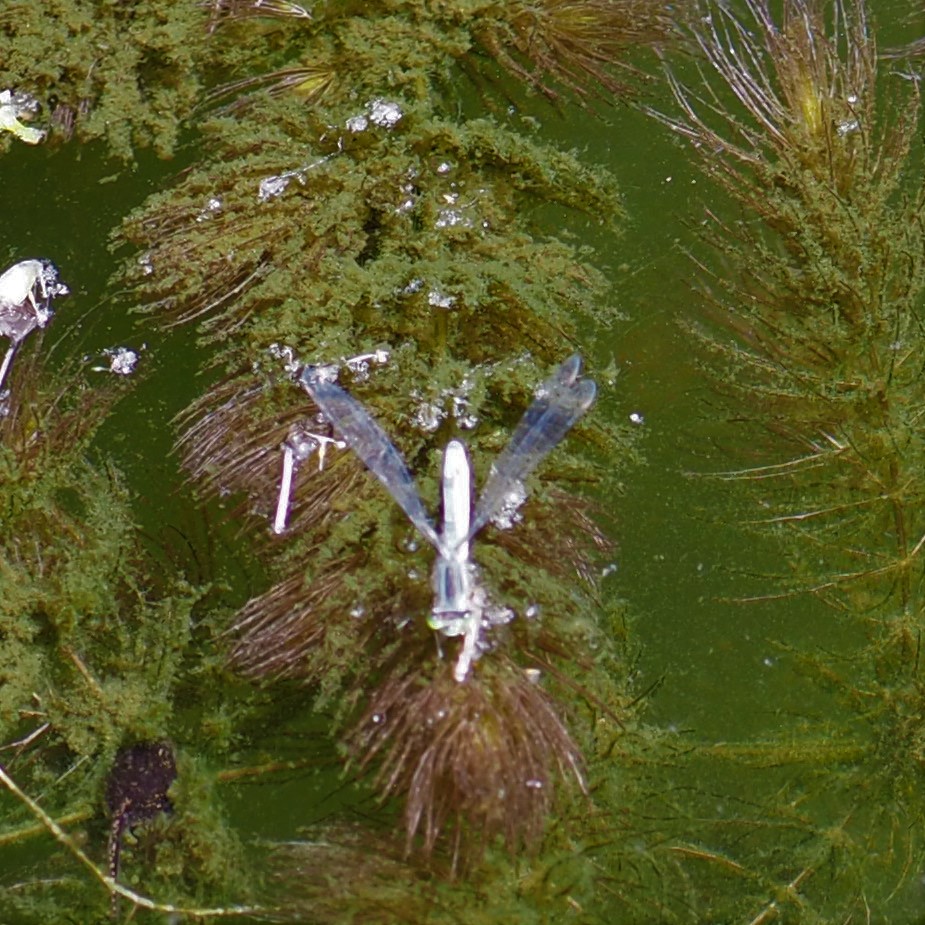
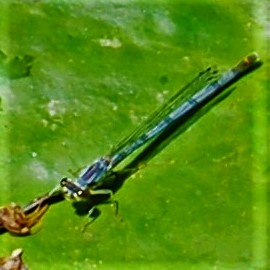
Let's admire the flies for a while. As usual, we start with the Crane Flies. This first one is a Ferruginous Tiger Crane Fly. And here are a couple more.
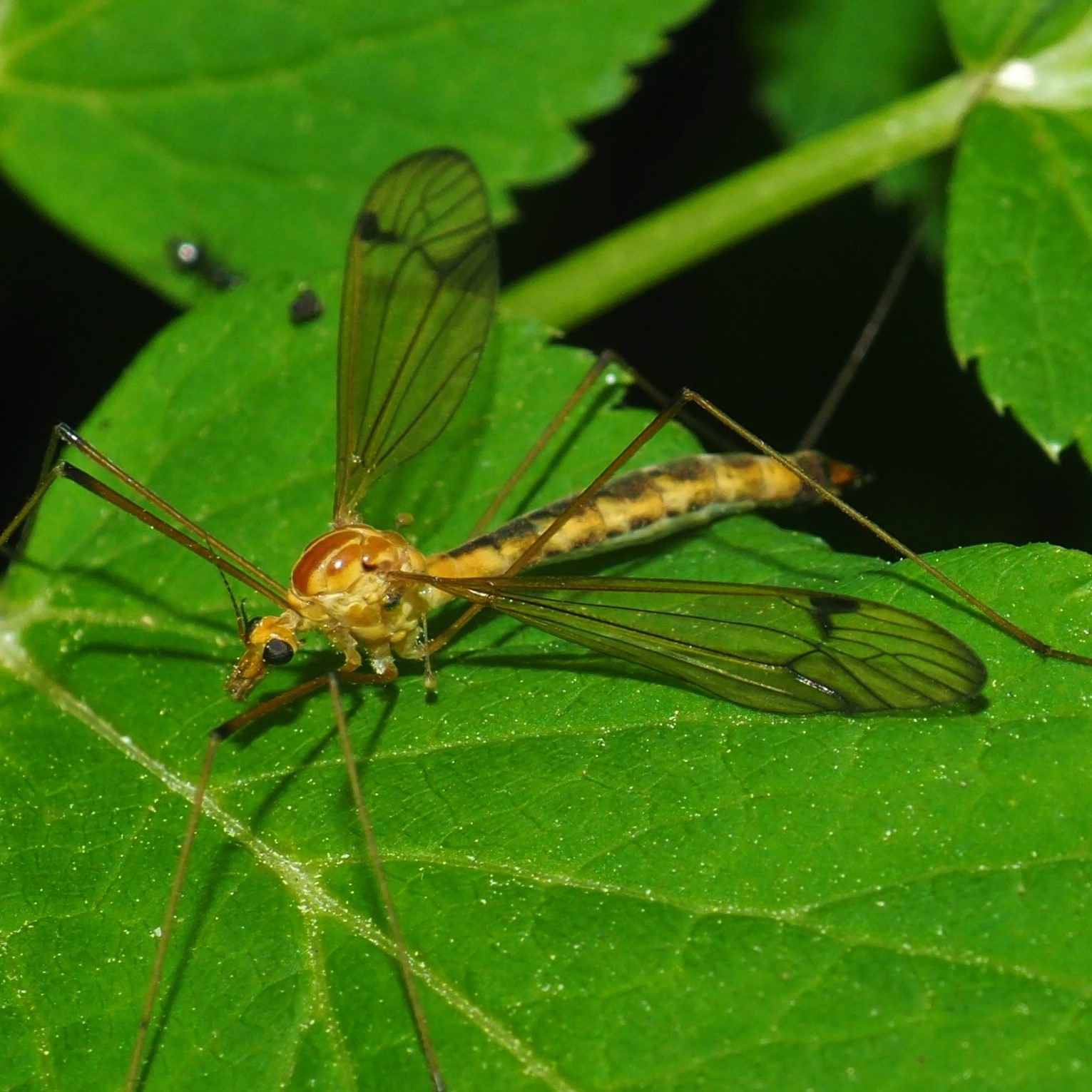
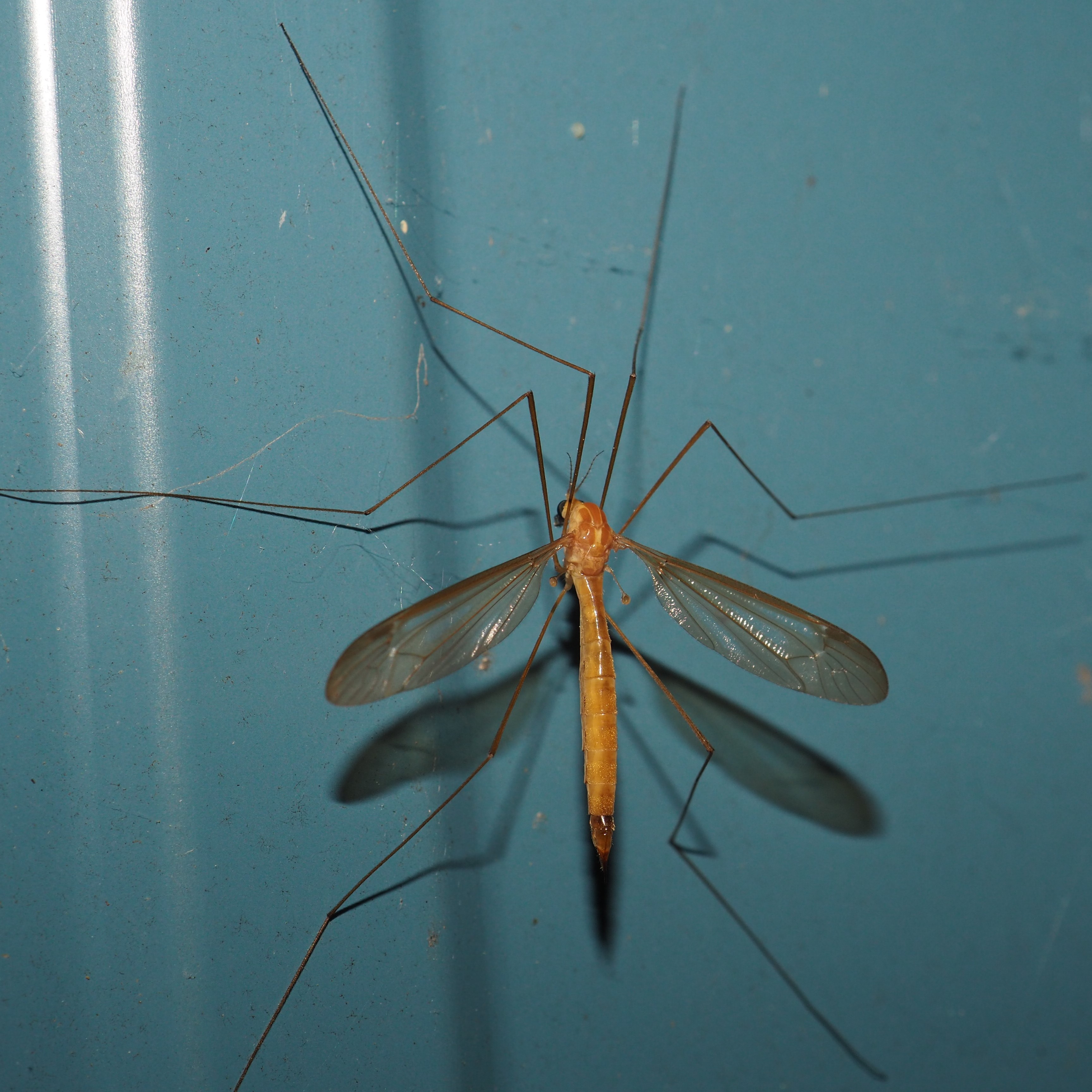
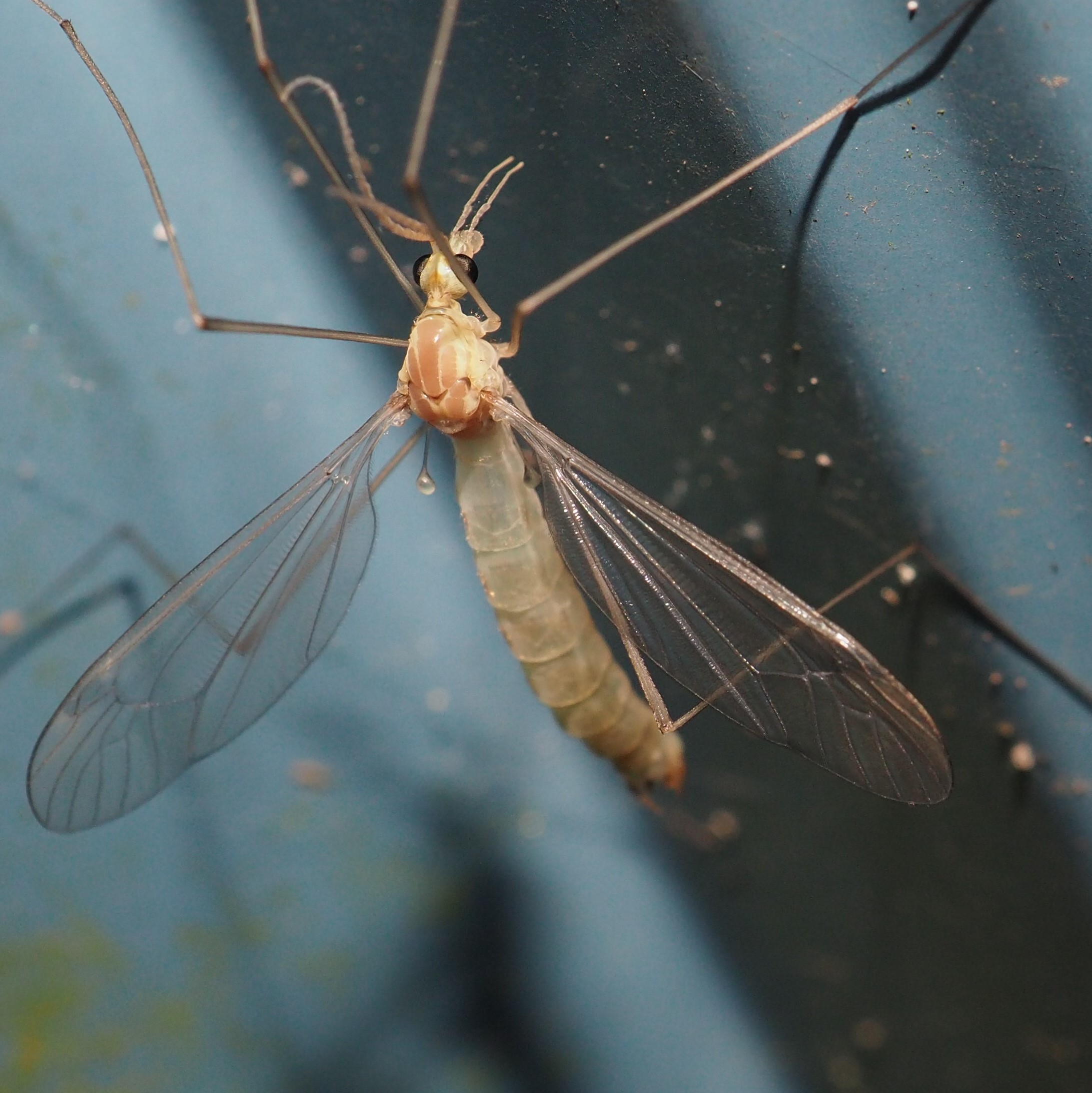
This lovely little fly sat on my thumb. While my friend Michael took a picture of it on his cellphone, it suddenly bit me with its tiny proboscis. It will turn out to be one or the other of the Deer Flies. Next is one of the little Hover Flies, genus Toxomerus. Third is still a mystery.
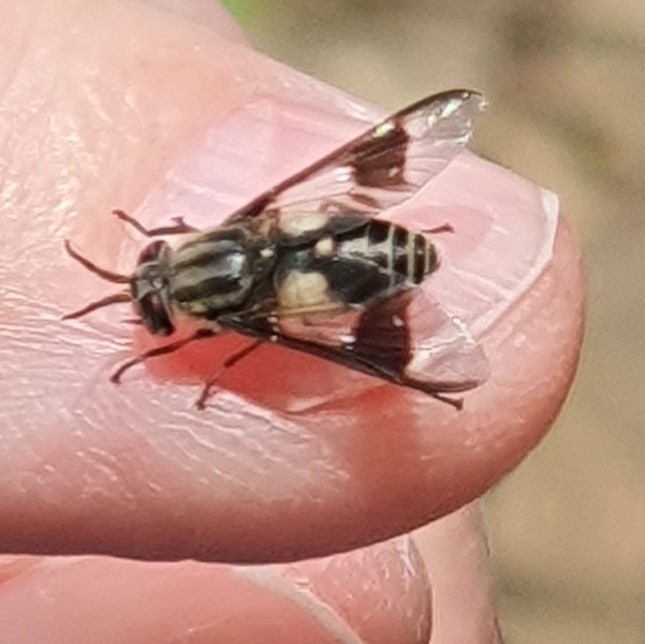
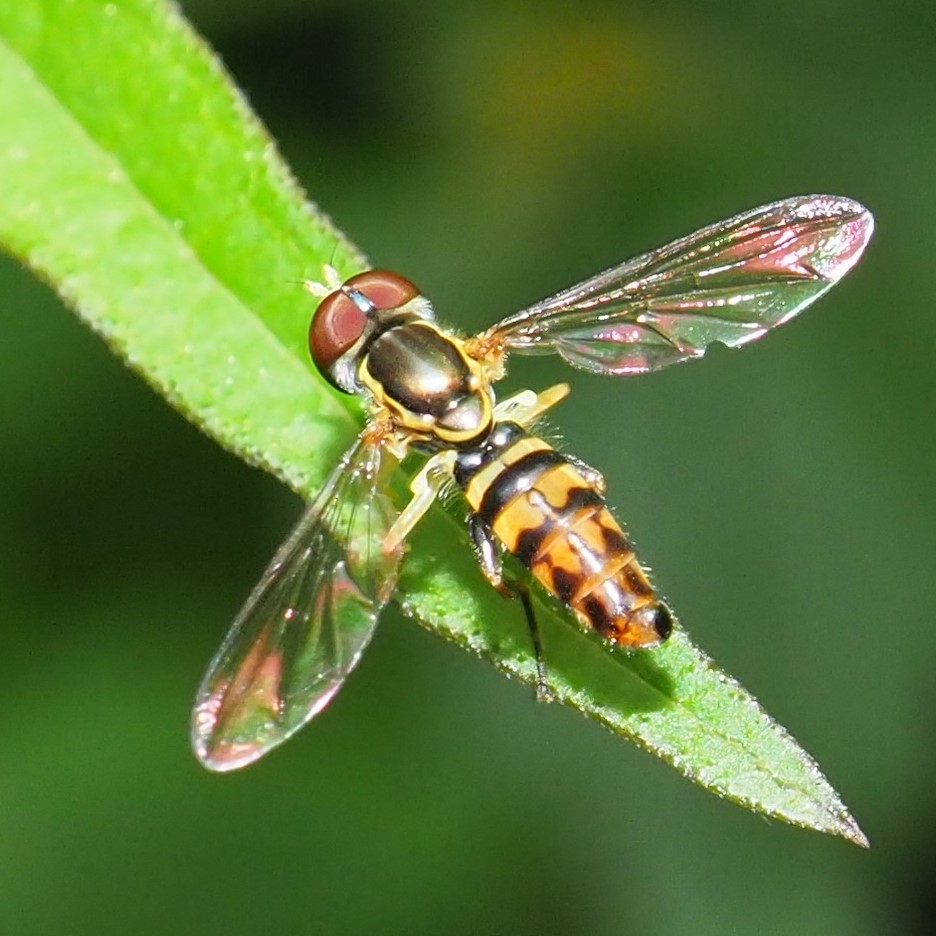
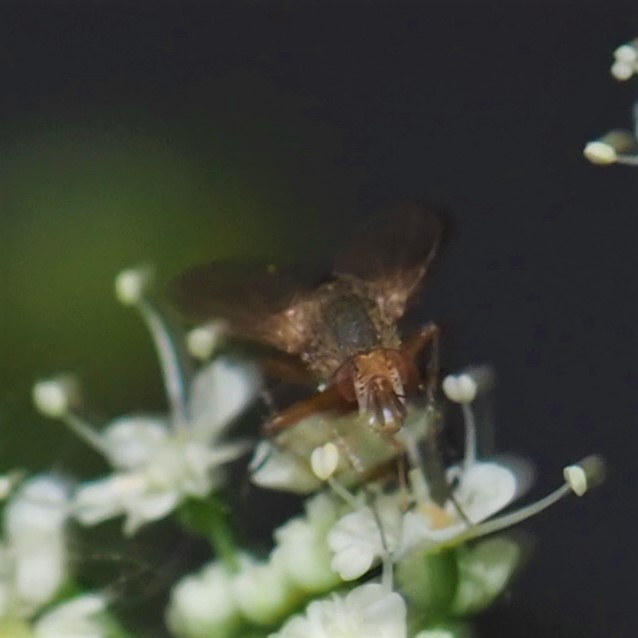
Here is a side view of the lovely little Long-legged Fly we saw last week. Third is the original.
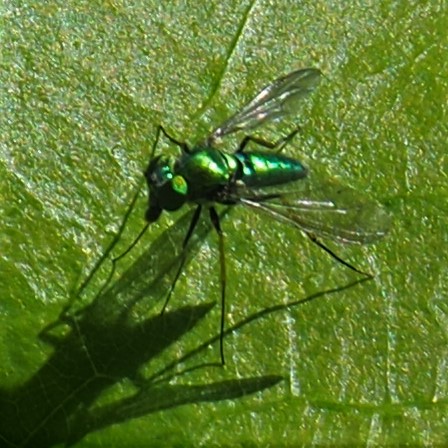
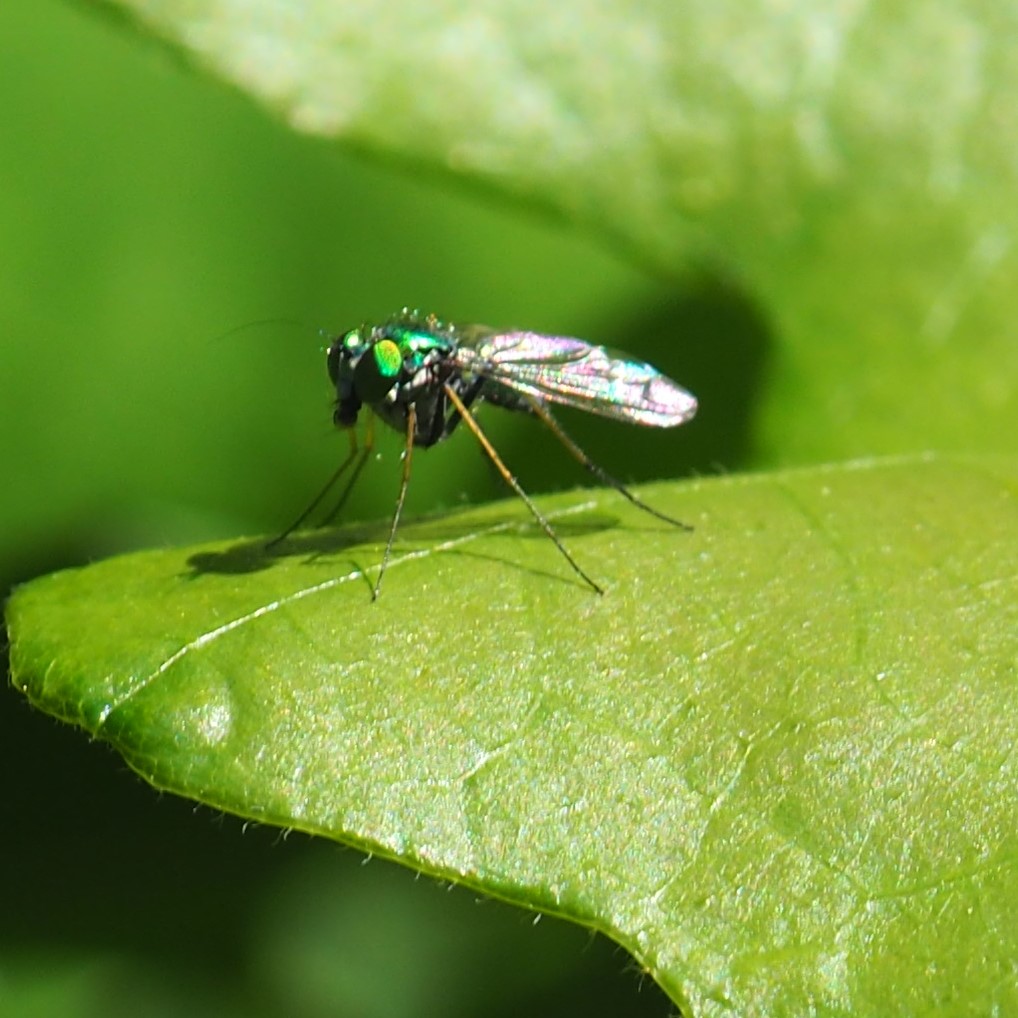

That beautiful Picture-winged Fly was here again this week. The second one is in genus Minettia. The third I found already dead. I don't like to show dead creatures, but was seduced by the brilliant green-blue color.

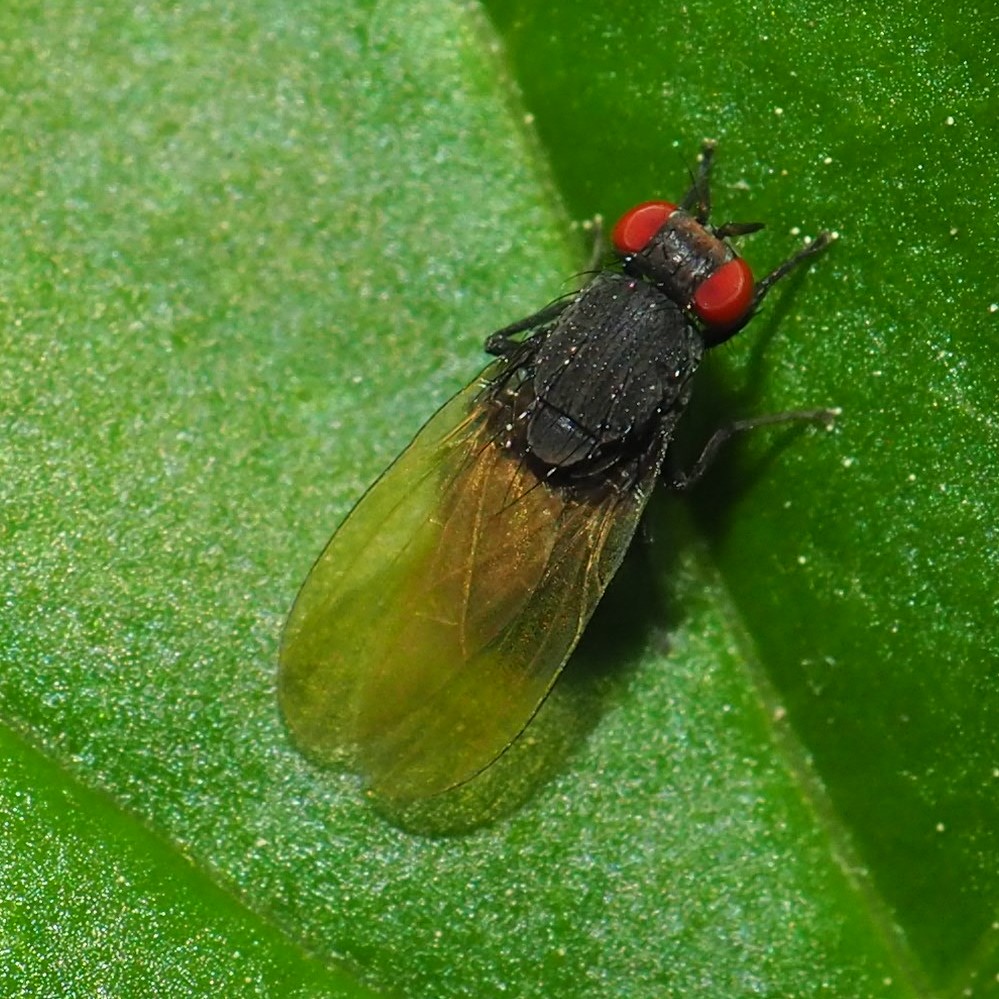
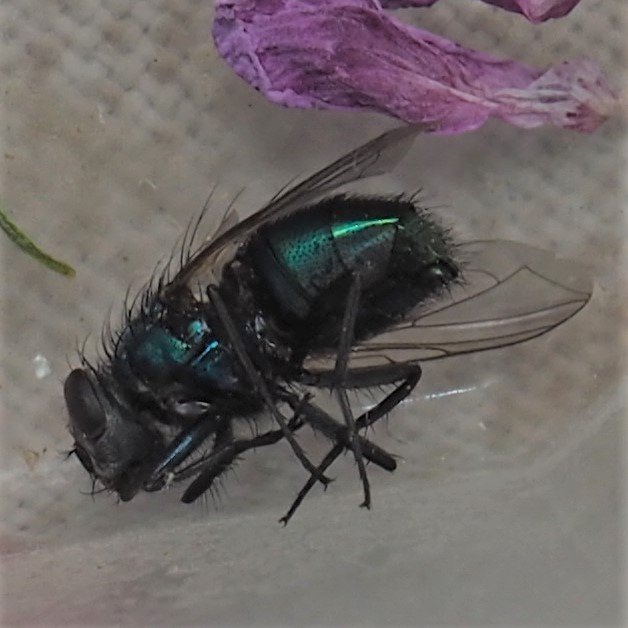
Here are a pair of unknown Flies mating. Second is a Striped-leg Robber Fly. Next is another Robber Fly, one of the Laphria genus, known to mimic bees. Fourth is a new Fly for me. I haven't had it ID'ed yet. That was a goodly batch of Flies. Maybe we will see more next week. The way Creatures are starting to descend on us, I wouldn't be surprised.
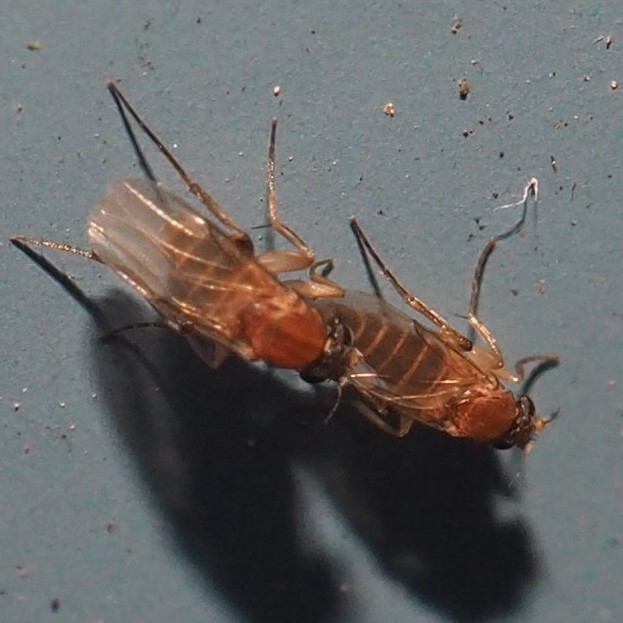
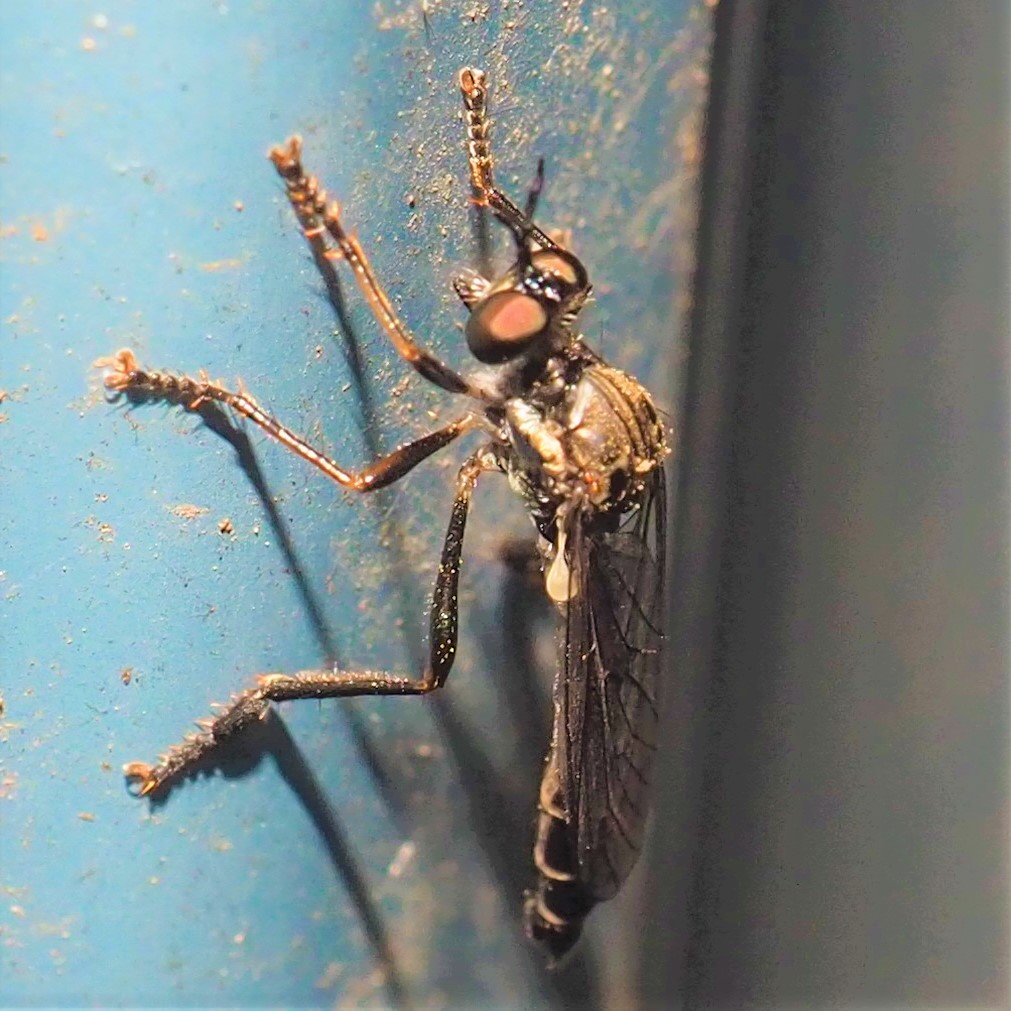

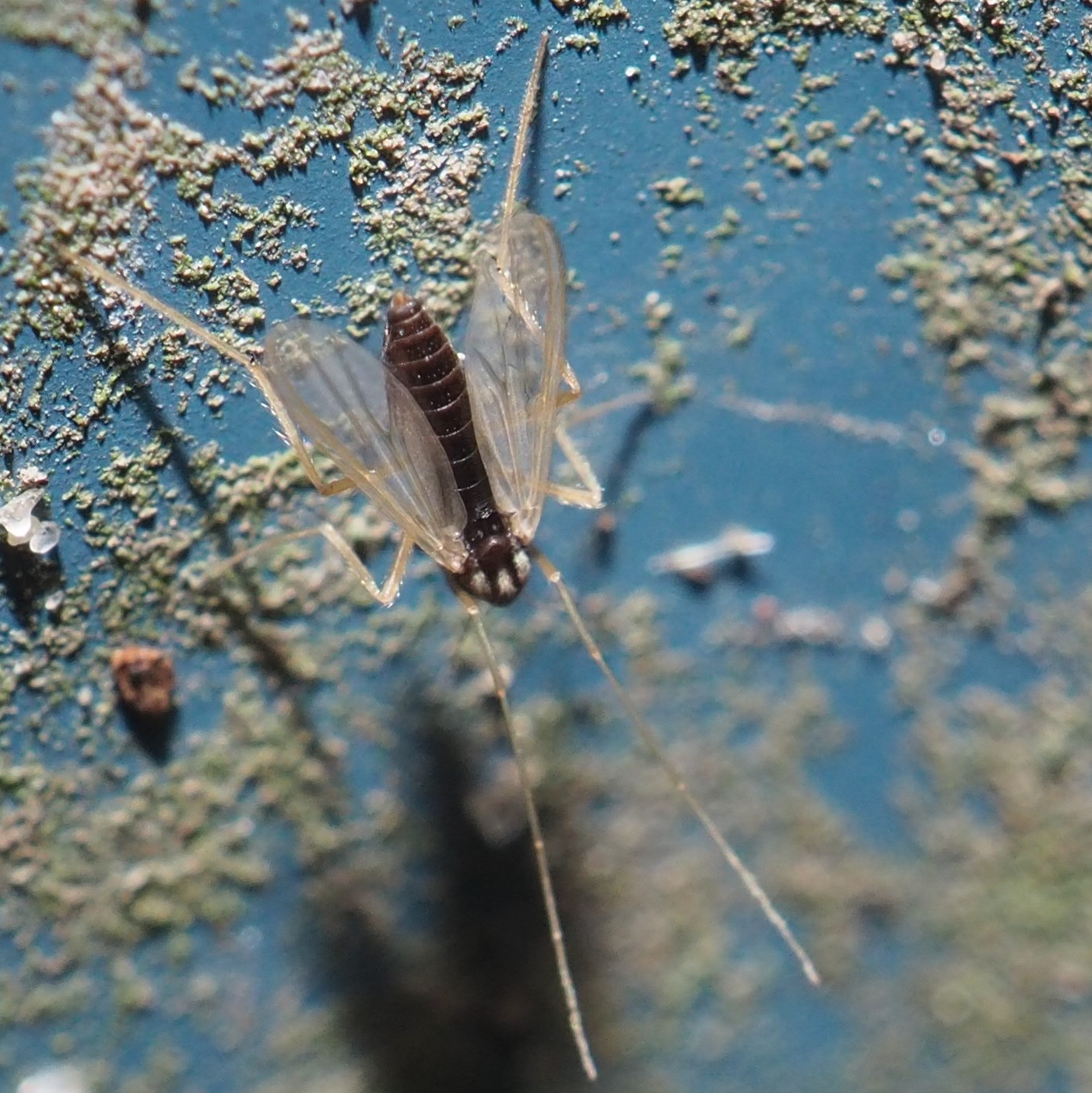
I've skipped over the Butterflies and Moths till now. This Crescent (maybe Pearl Crescent) Butterfly was found almost underfoot. This next Skipper was a surprise, and I still don't know its name. Third is a mystery Moth. And fourth is a very large Looper (this is its face view). Now I think we need a Flower Walk!
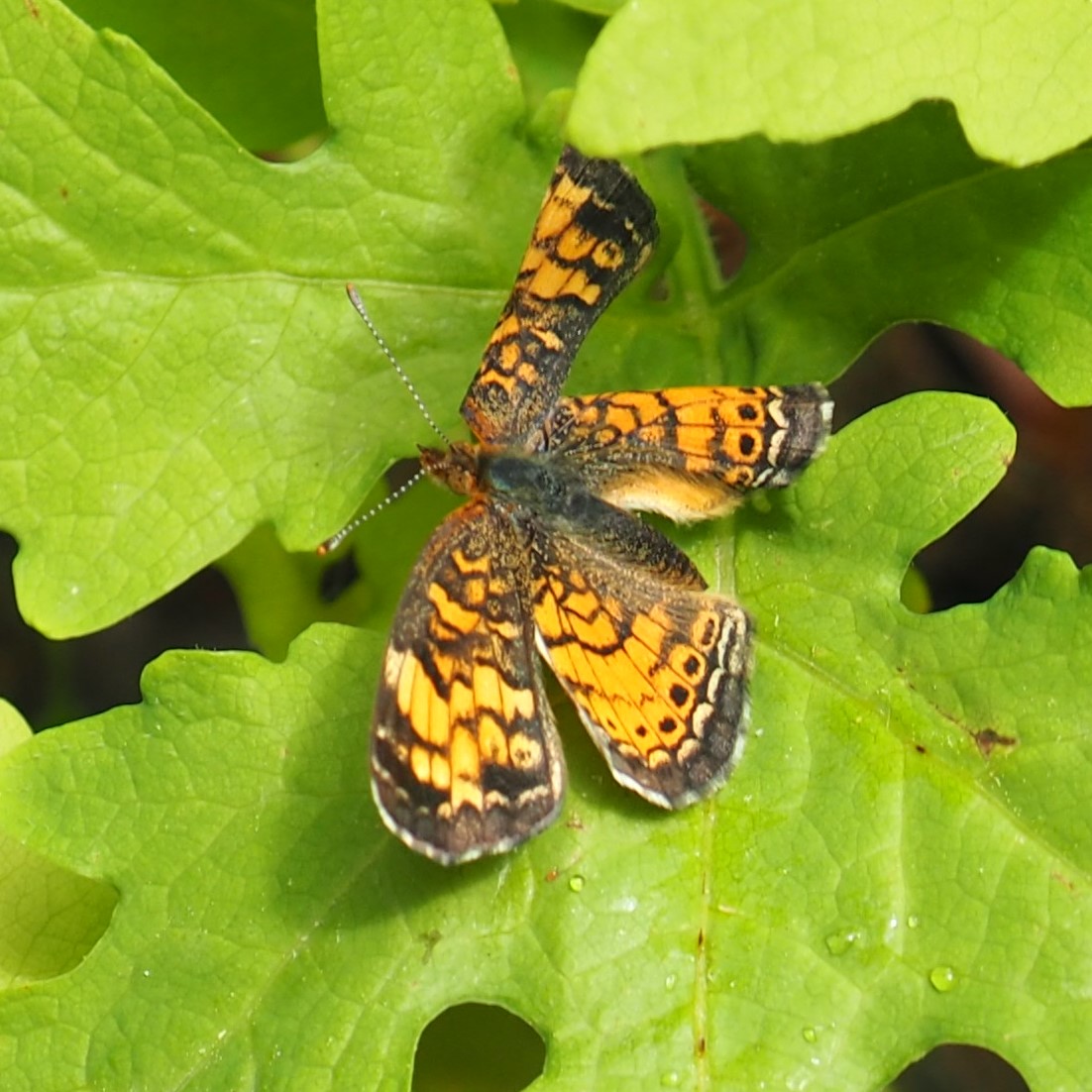
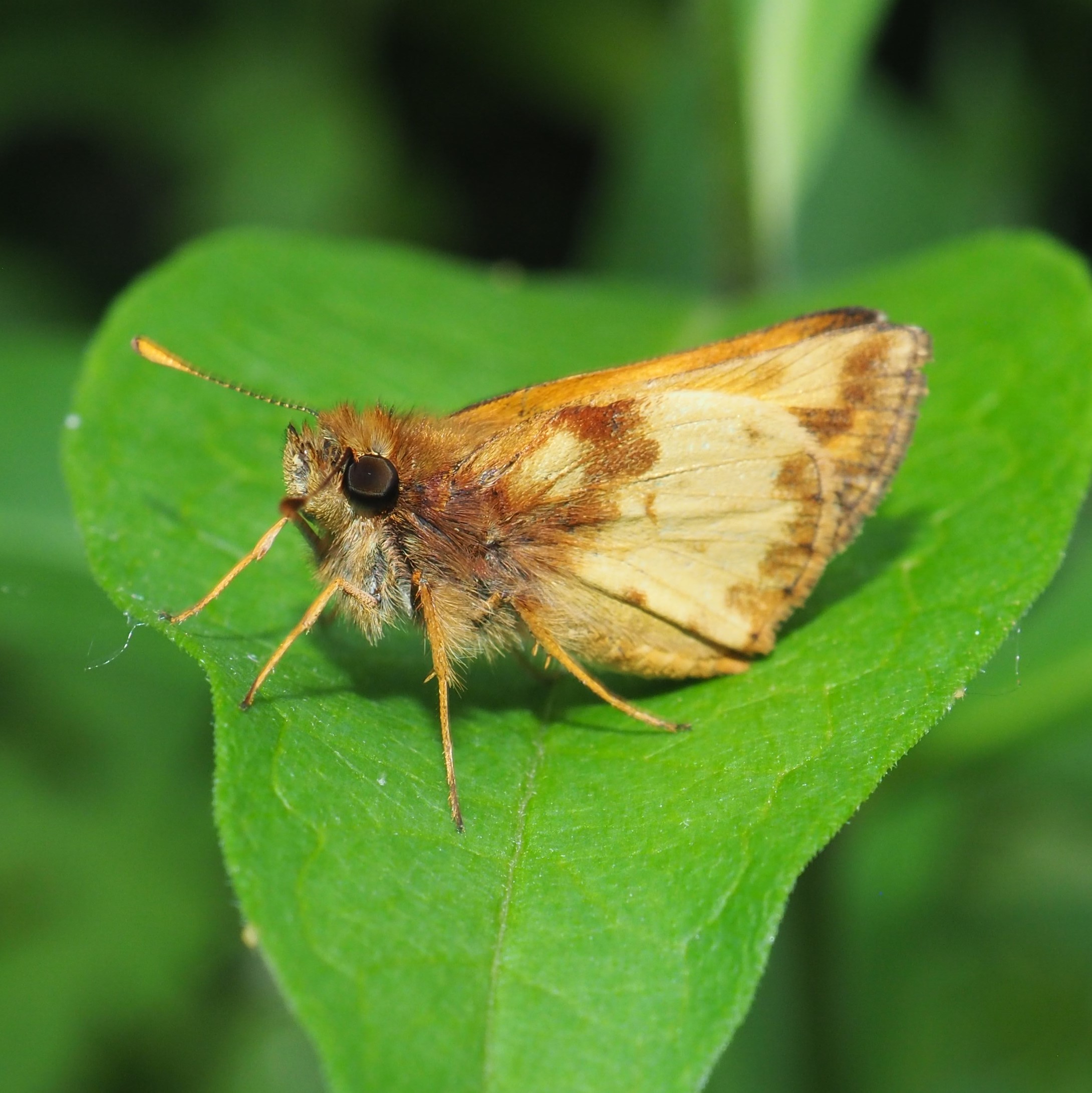
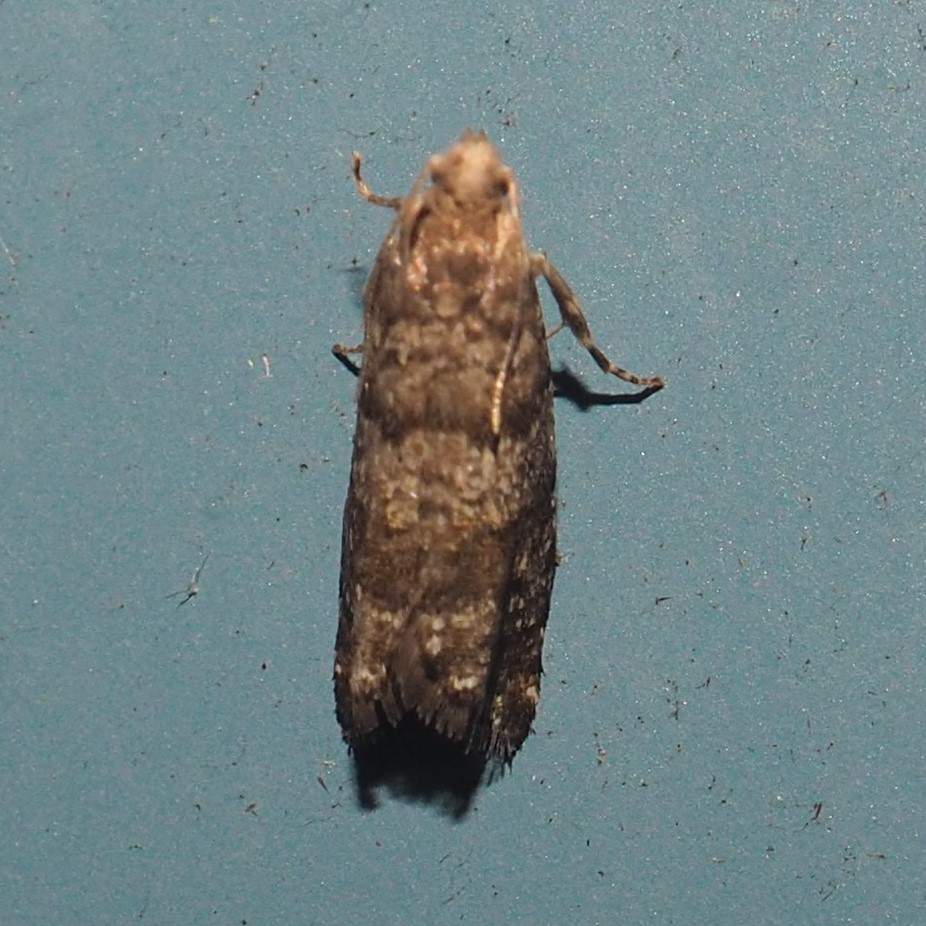

The Hawkweed looks sort of like a multi-flowered Dandelion, but it blooms more than a foot off the ground. Here's more of that Cranesbill Geranium. Third is a new kind of grass flowering in the front yard. Third is the Celandine Poppy, still going like the Energizer Bunny.


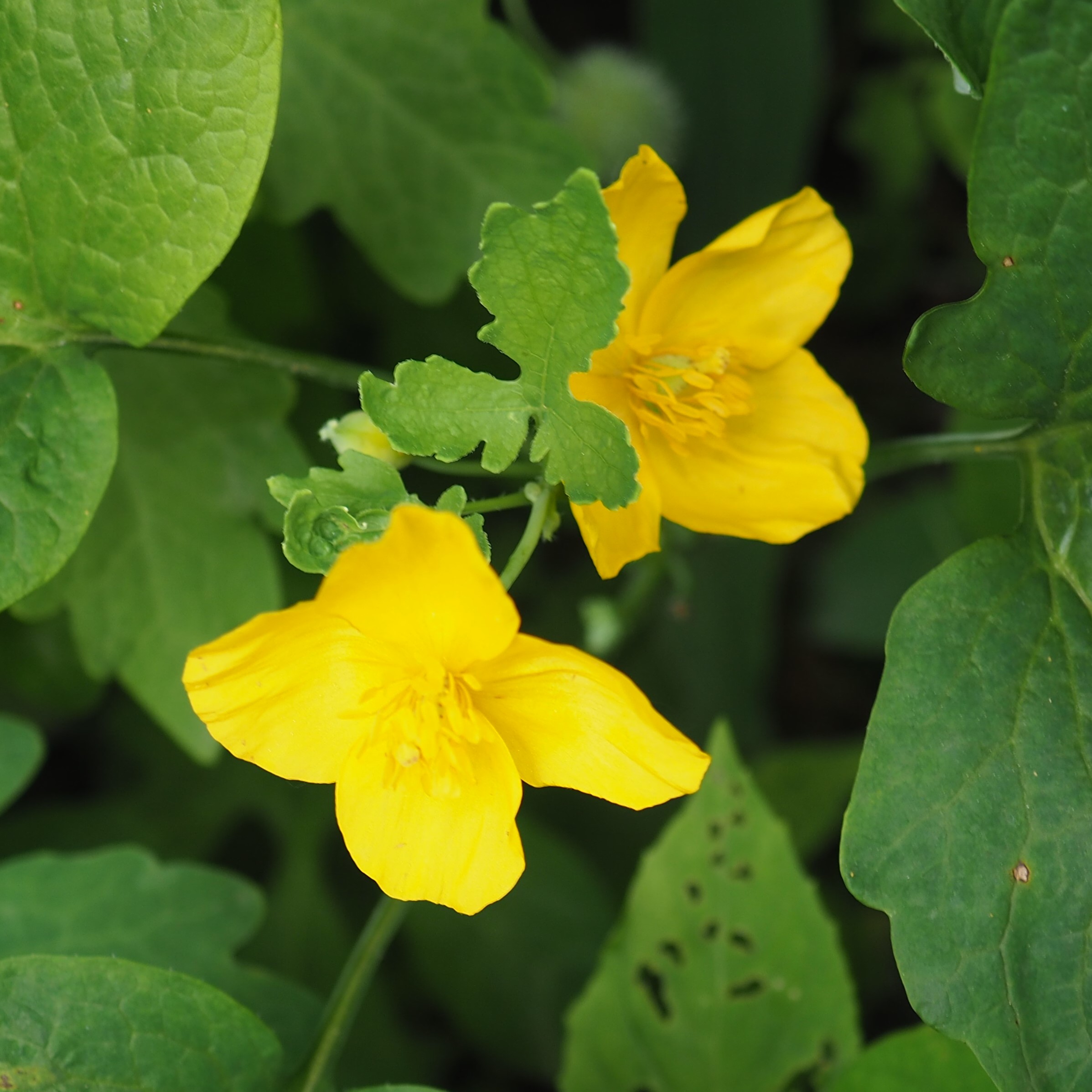
The Horsetails, those very old (maybe Carboniferous) plants, are spreading. The Mullein (I think) looks as if it may be forming a bloom spike soon. In the north yard, next to the next house, the White Clover is starting a carpet.

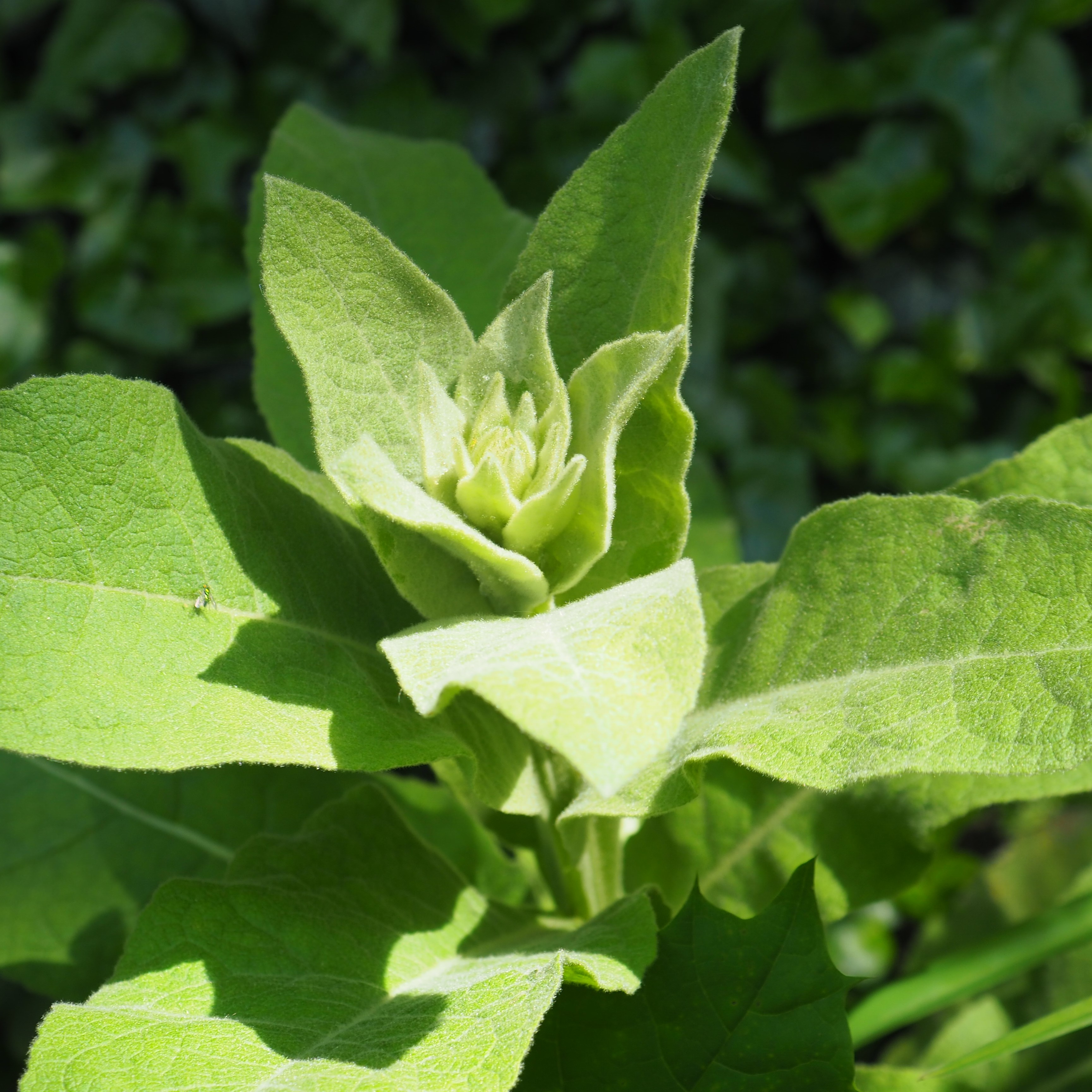
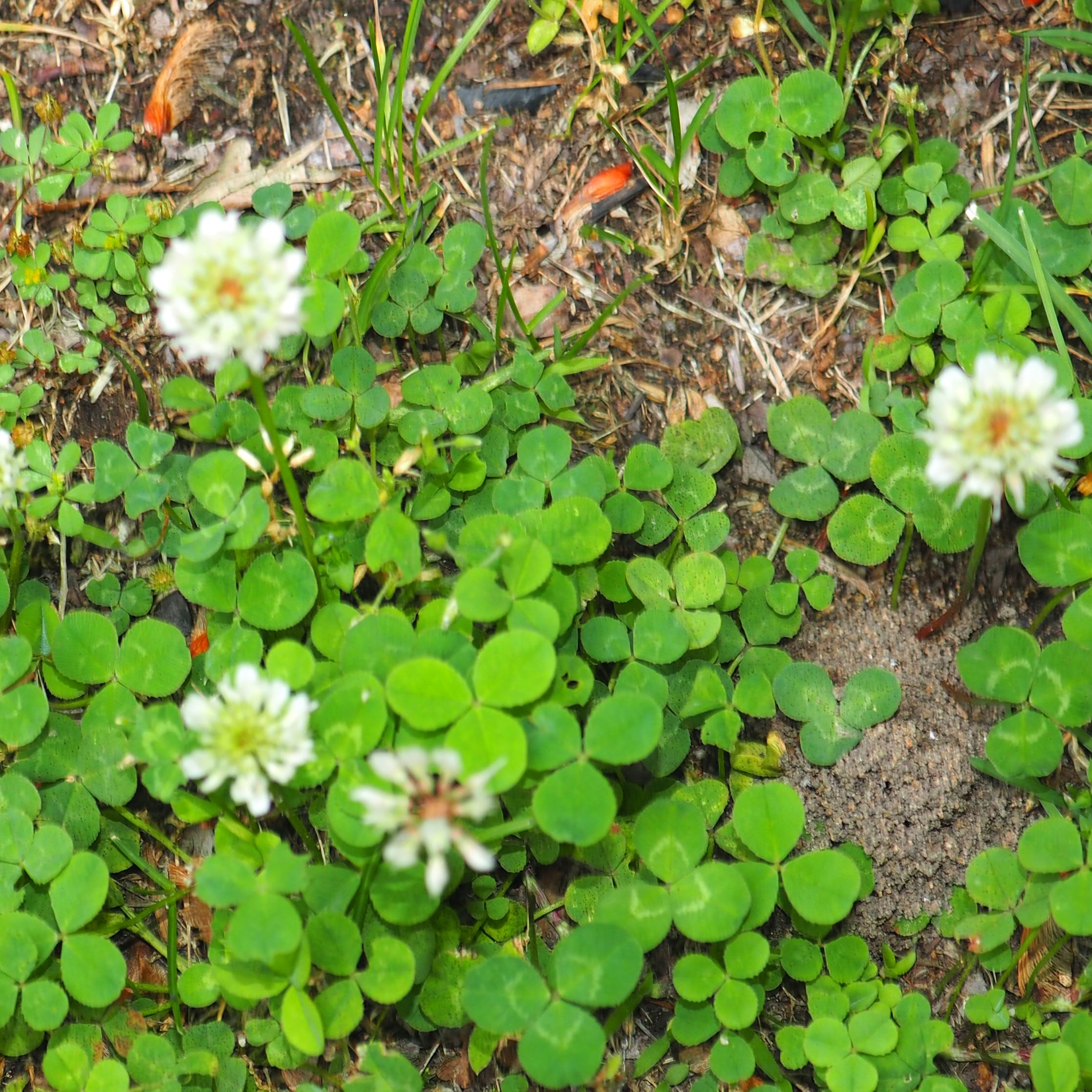
The Pink Columbine is almost over. Meanwhile, the Spiderwort, identified on iNat as Bluejacket
(Tradescantia ohiensis), is just taking over.
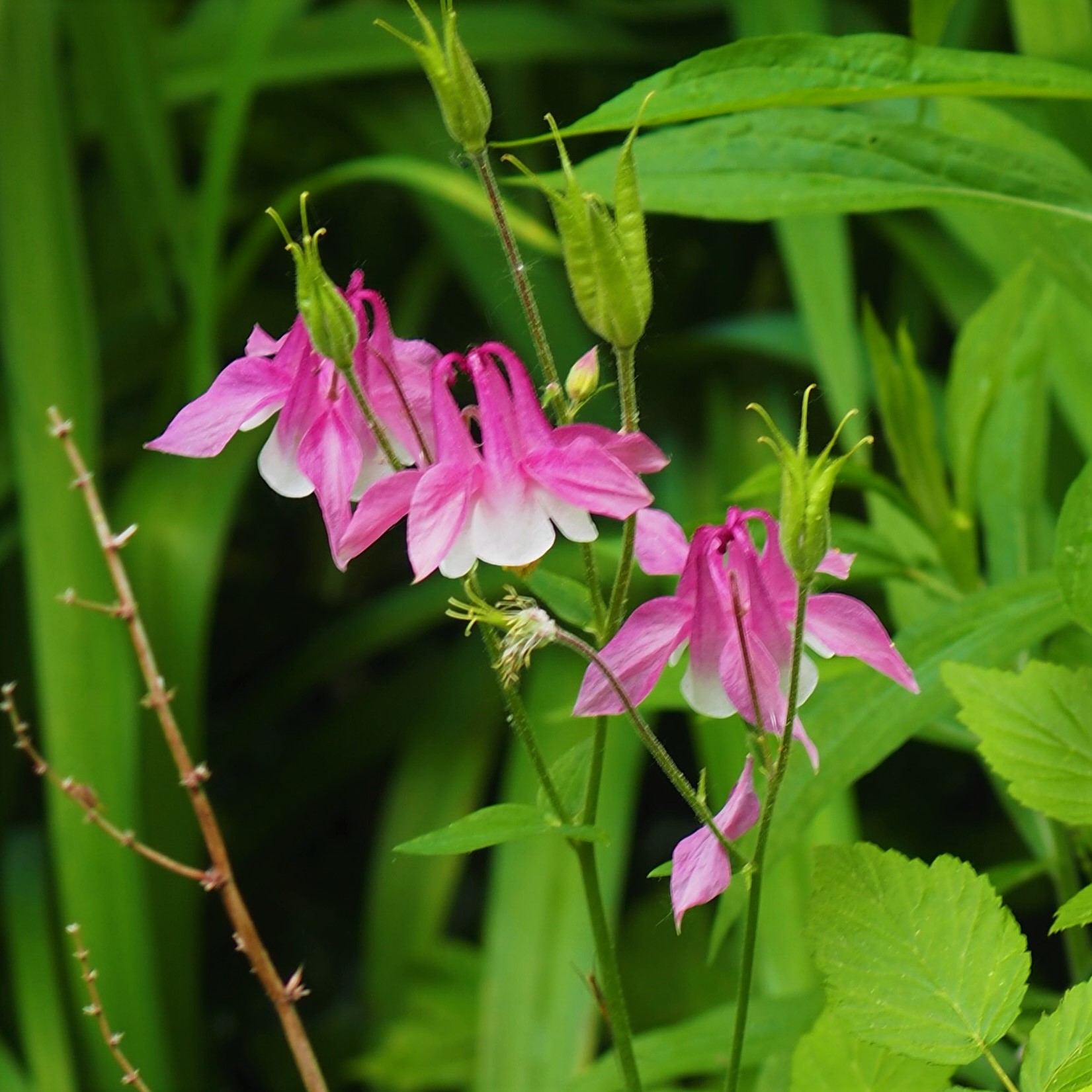
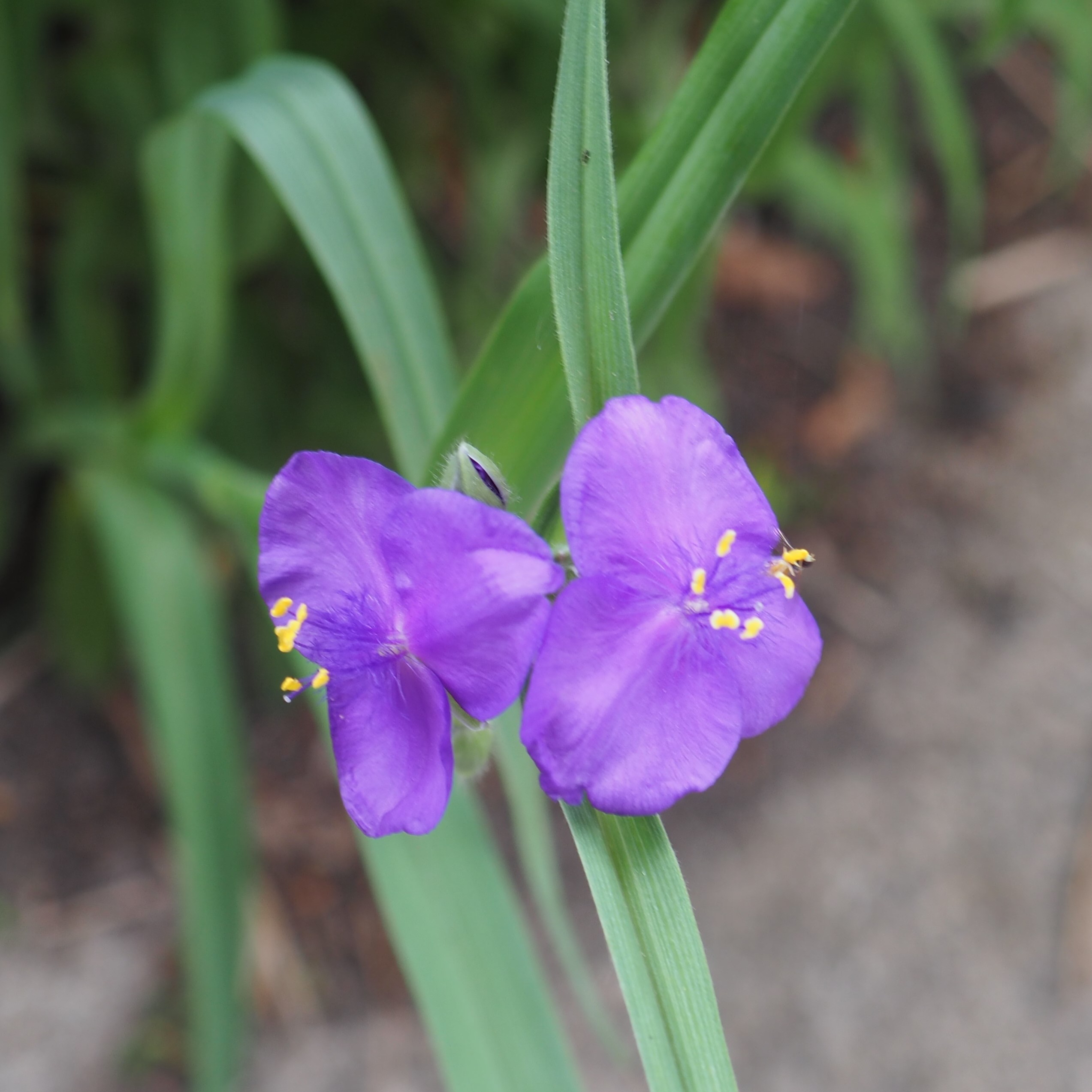

The Dame's Rocket is fading fast. So far I haven't seen any of the tiny Weevils that were so plentiful last year on either the Wall or on the flowers - Yet. This third photo shows a tiny Bee or Fly in the still-delicious flowers.

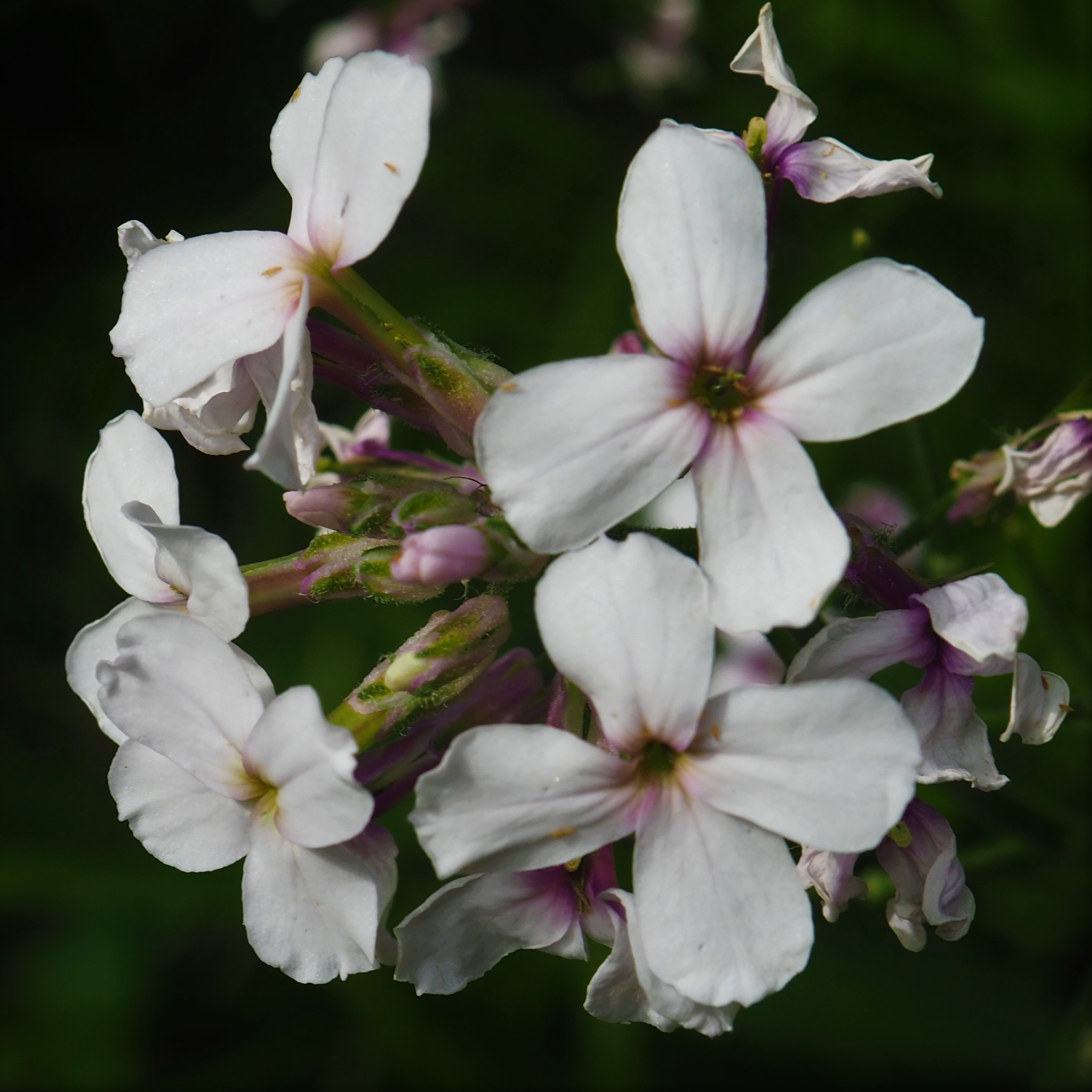
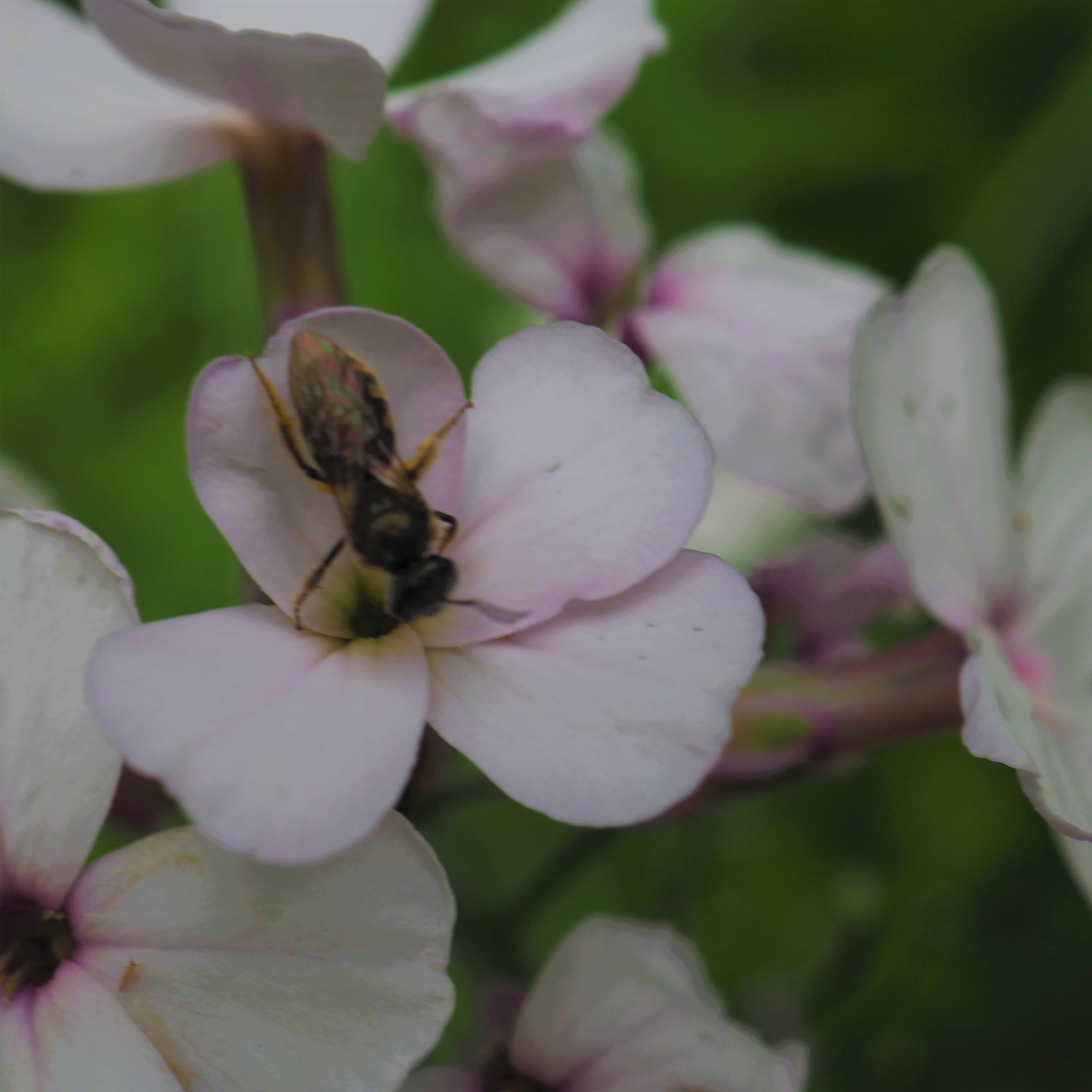
I mentioned at the beginning of this blog that the old Peony from the Back Yard seemed to have migrated to the very Front Yard, but I hadn't noticed it until it was about to break into bloom (picture 2). Picture 3 shows the underside of the flower and two Ants and a Leafhopper. I believe the Leafhopper is related to the Agallia genus. I still want to diagnose the two Ants. As I was taking a picture of these things, a new Blog member and one of the ladies who deliver my mail came by, and said that she had heard that Peonies won't bloom unless they possess some Black Ants to help open the seams between petals. Is this one of those Black Ants?
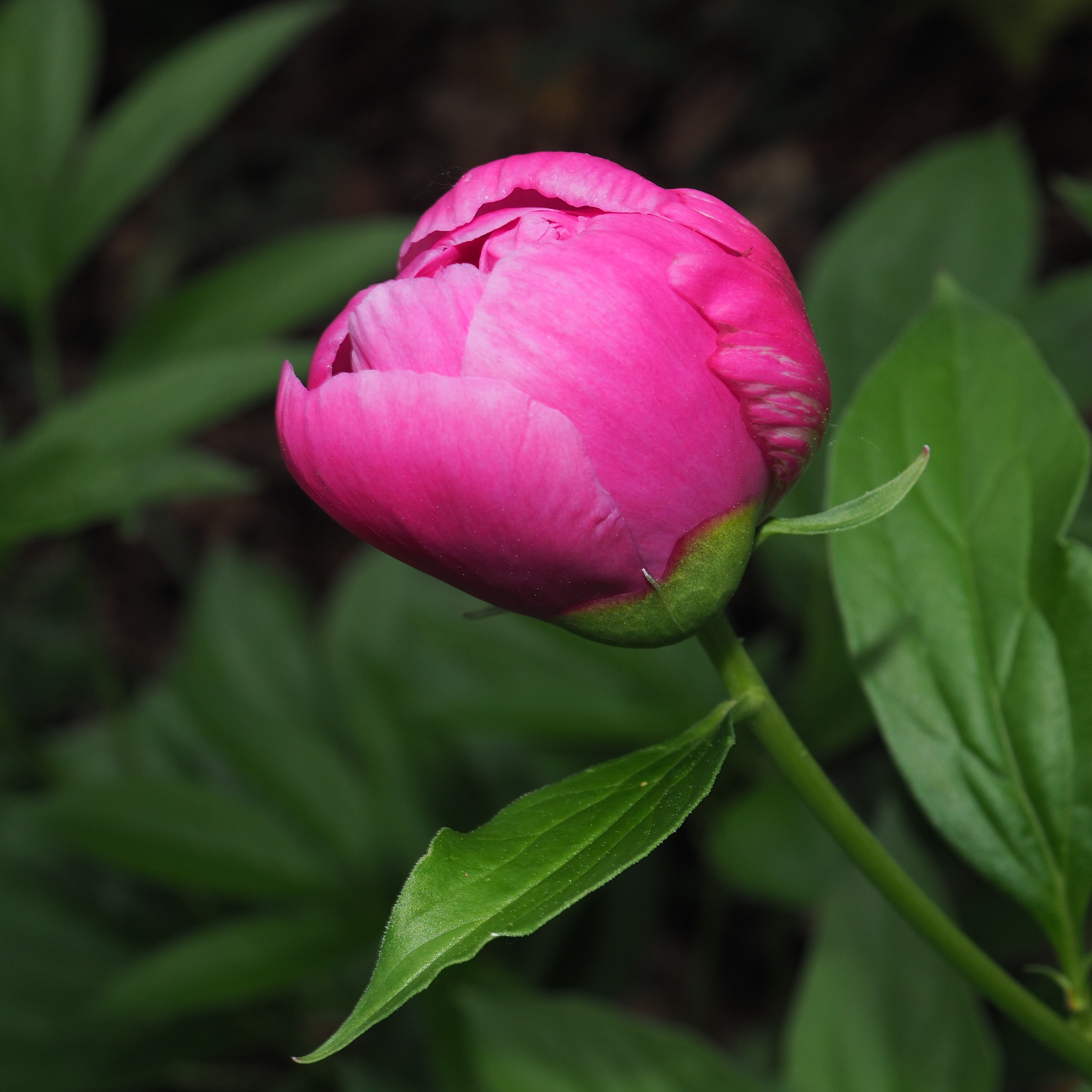

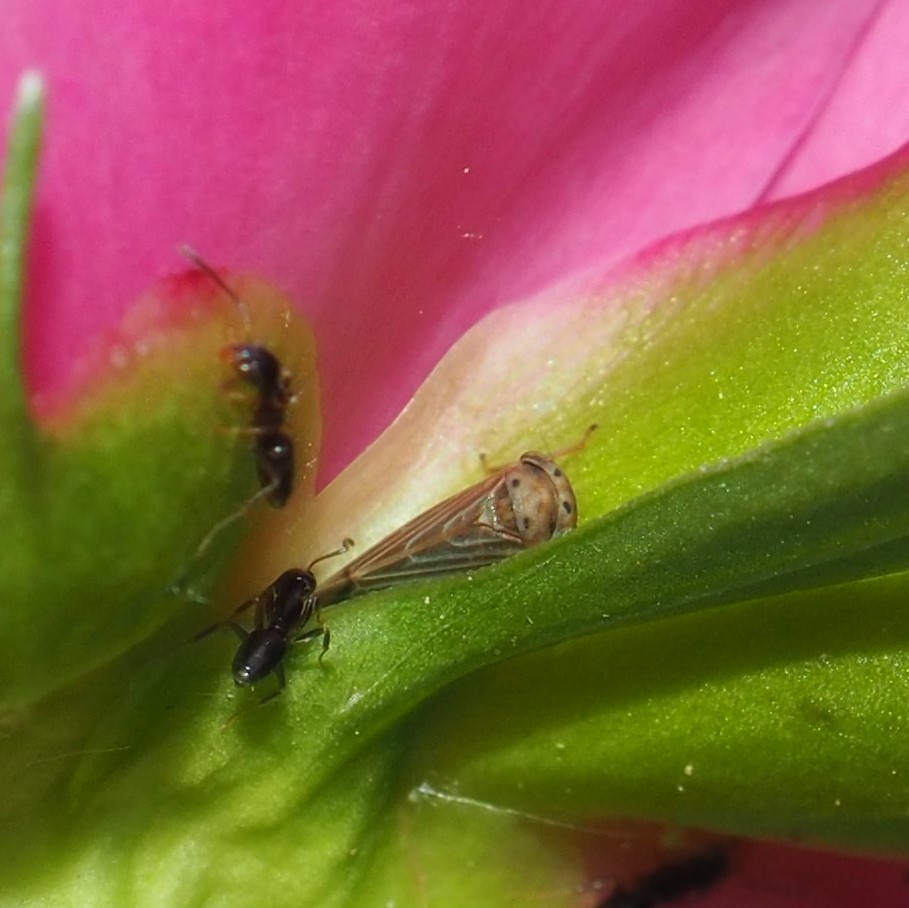
Does a Water Lily count as a flower? You bet it does! Last year we planted eight online-bought Lily corms, of which three or four survived 2021. This year two of those three or four deigned to put out new leaves and one of them finally popped a big bud, which I've been watching for a couple of weeks and then, just the other day, it opened into a beautiful pink-streaked Lily Flower! The Fishes seem to be almost as delighted as I am!
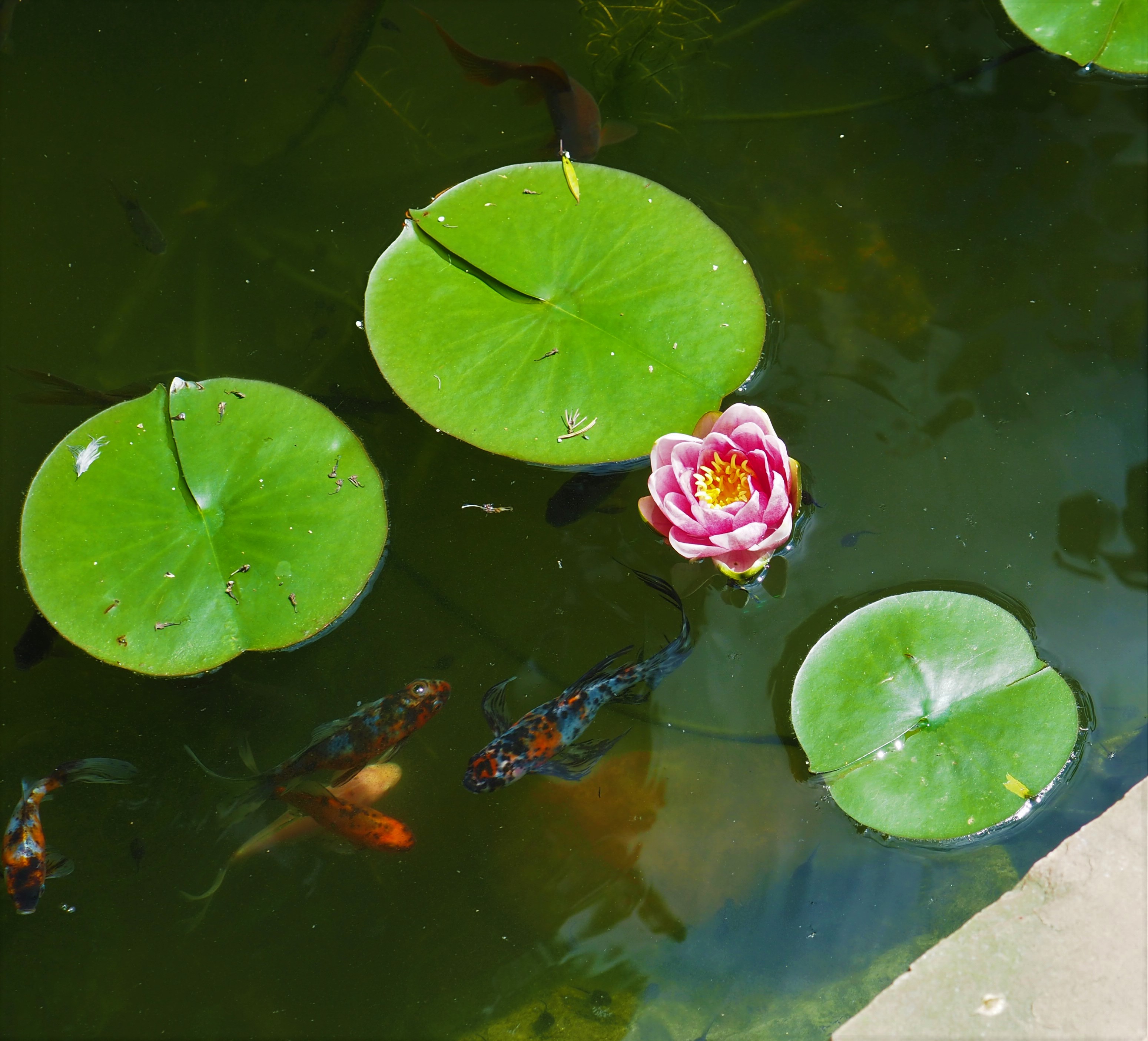
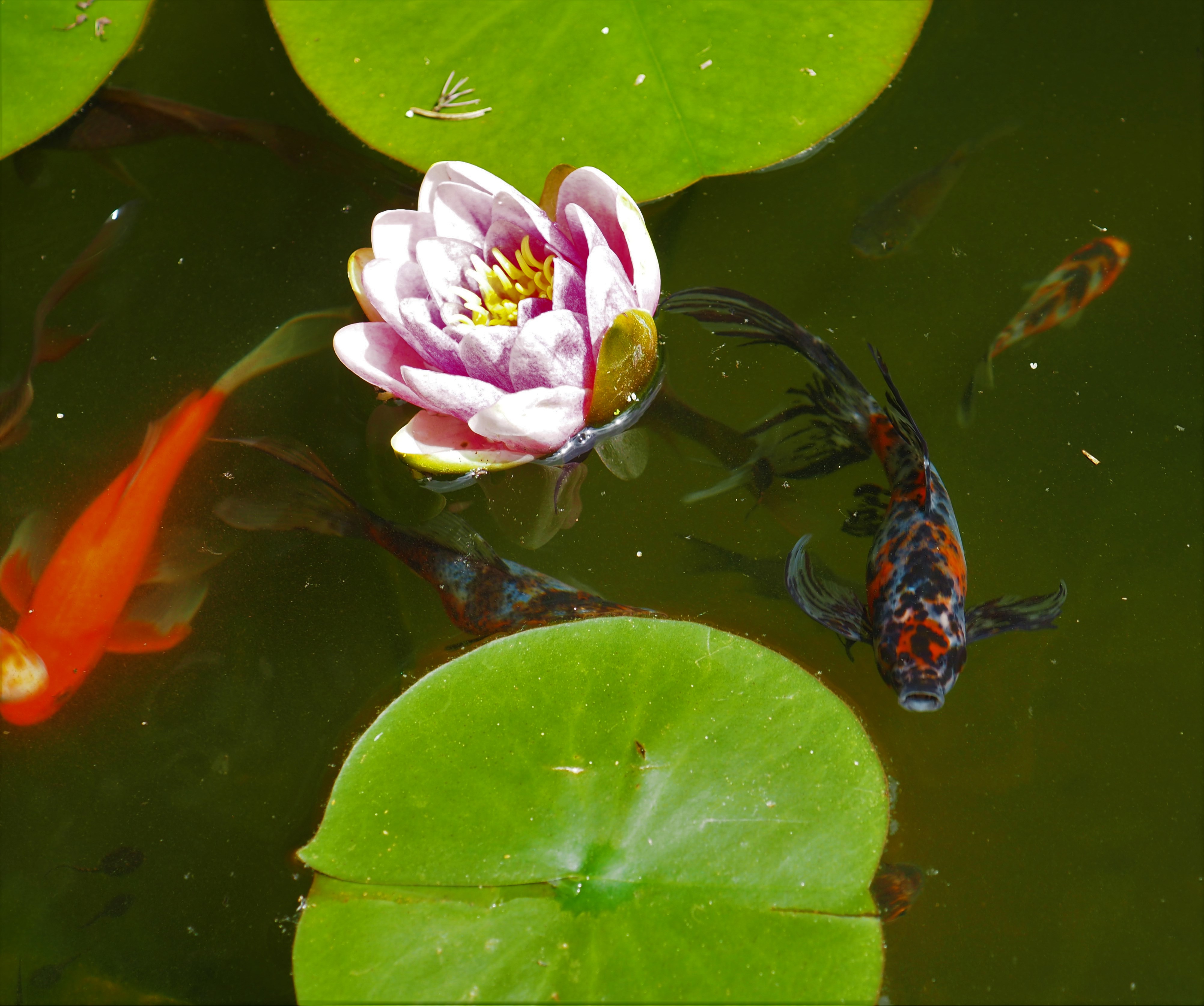
The Frogs have become harder to tell apart, without a good picture of them near each other. The littler one, who was trying so hard to communicate with me, is somewhat bolder, and will make little sounds as it hops toward me. The older one seems to like his pond to himself. I believe both these first two pictures are of Froggy two, the elder Frog. But picture 3 shows both Froggy two and Froggy three. Can you tell them apart? Picture 4 is inserted here even though the Toads are long gone from the Pond - these are some of the Tadpoles they left in the sense of eggs. I still think this picture shows one of the Tadpoles beginning to grow one of the four feet it needs to grow before it can finish its task of maturing into a Toad!
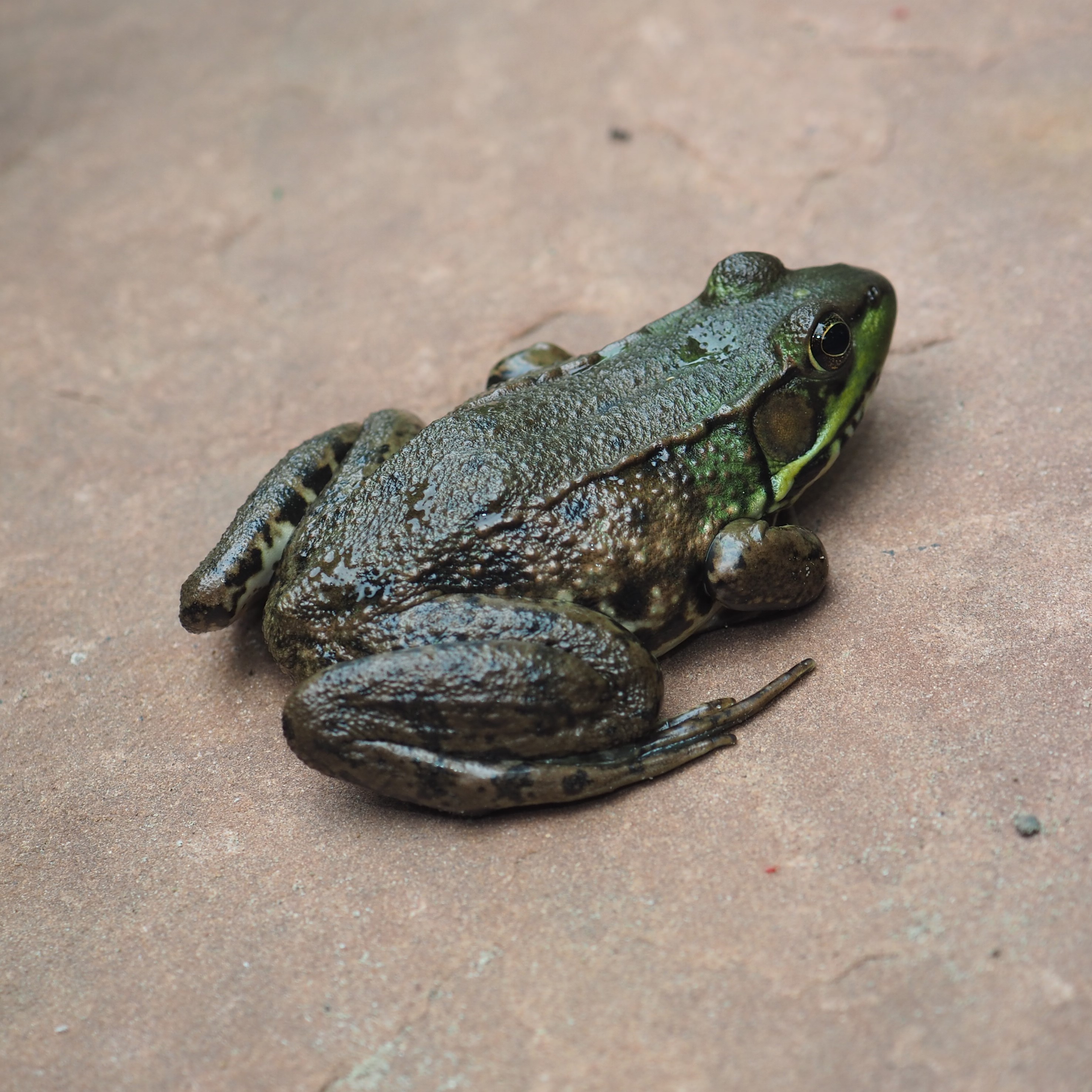
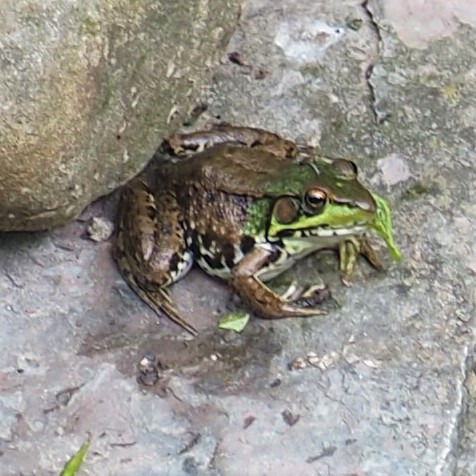
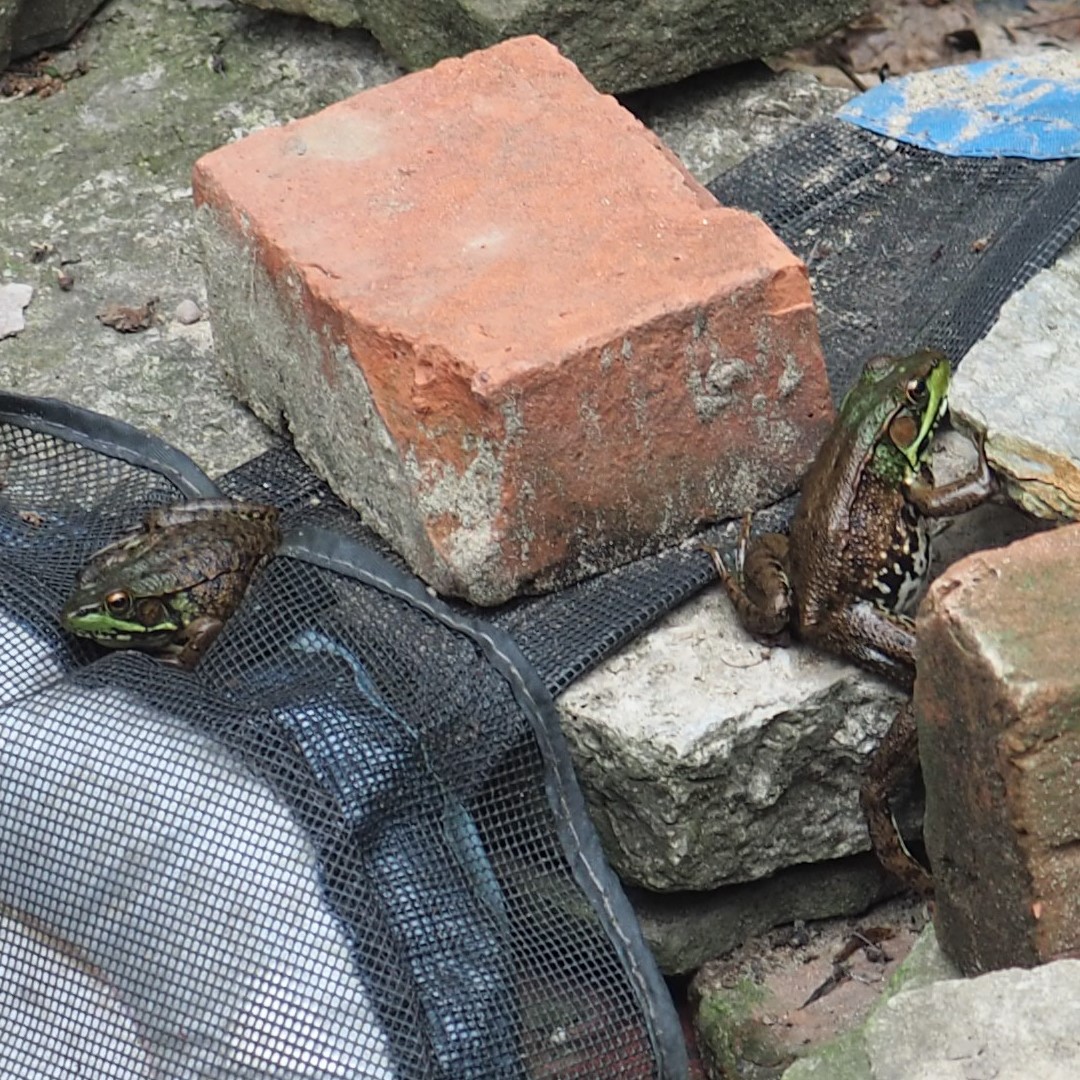

The Spiders are all over the place! And so many kinds! Obviously a good quantity are your Cobwebbers, and maybe a few are Common House Spiders. But even those are rather pretty, like number 1. Next is a Common House Spider, but what is so common about this male turning bright red - must be coming on to mating season. Picture 3 gives us a good view of his pedipalps.
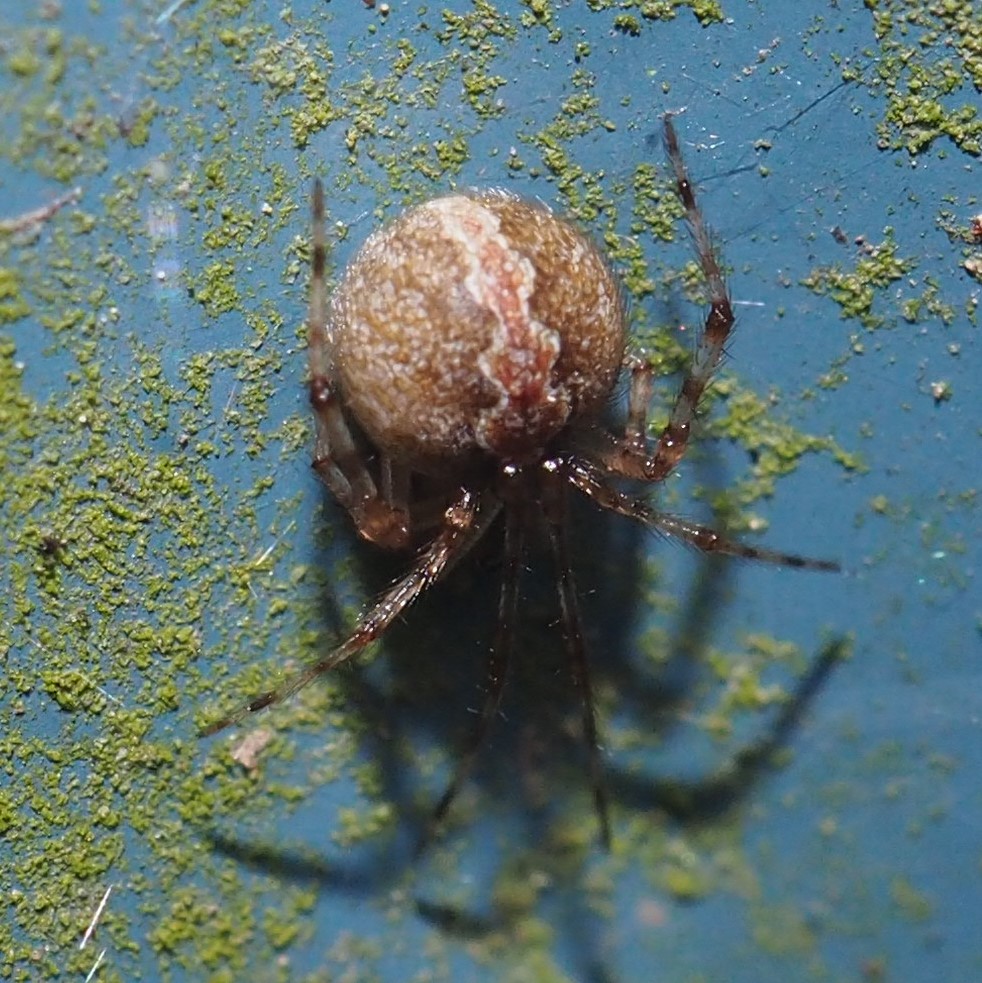
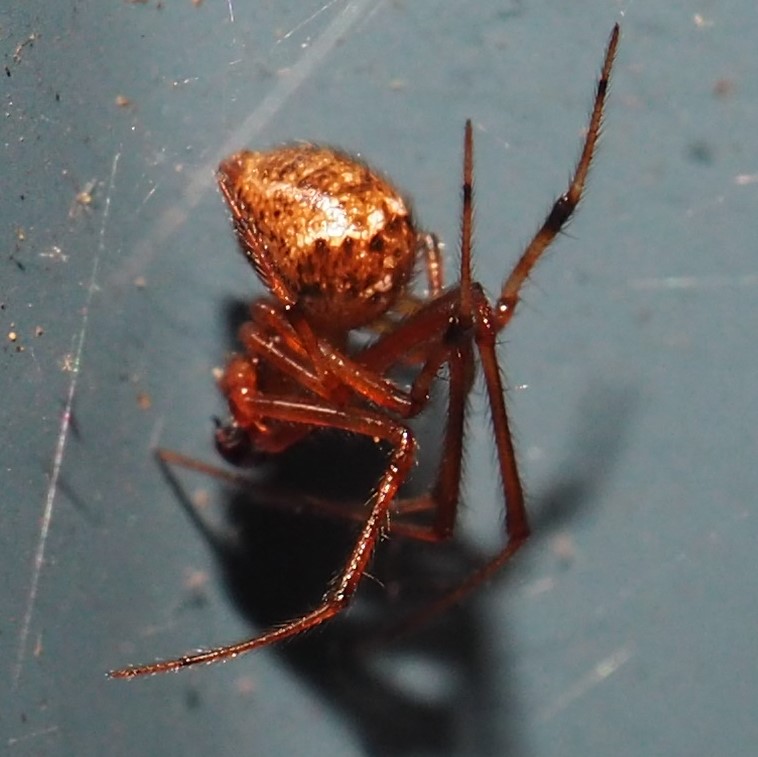
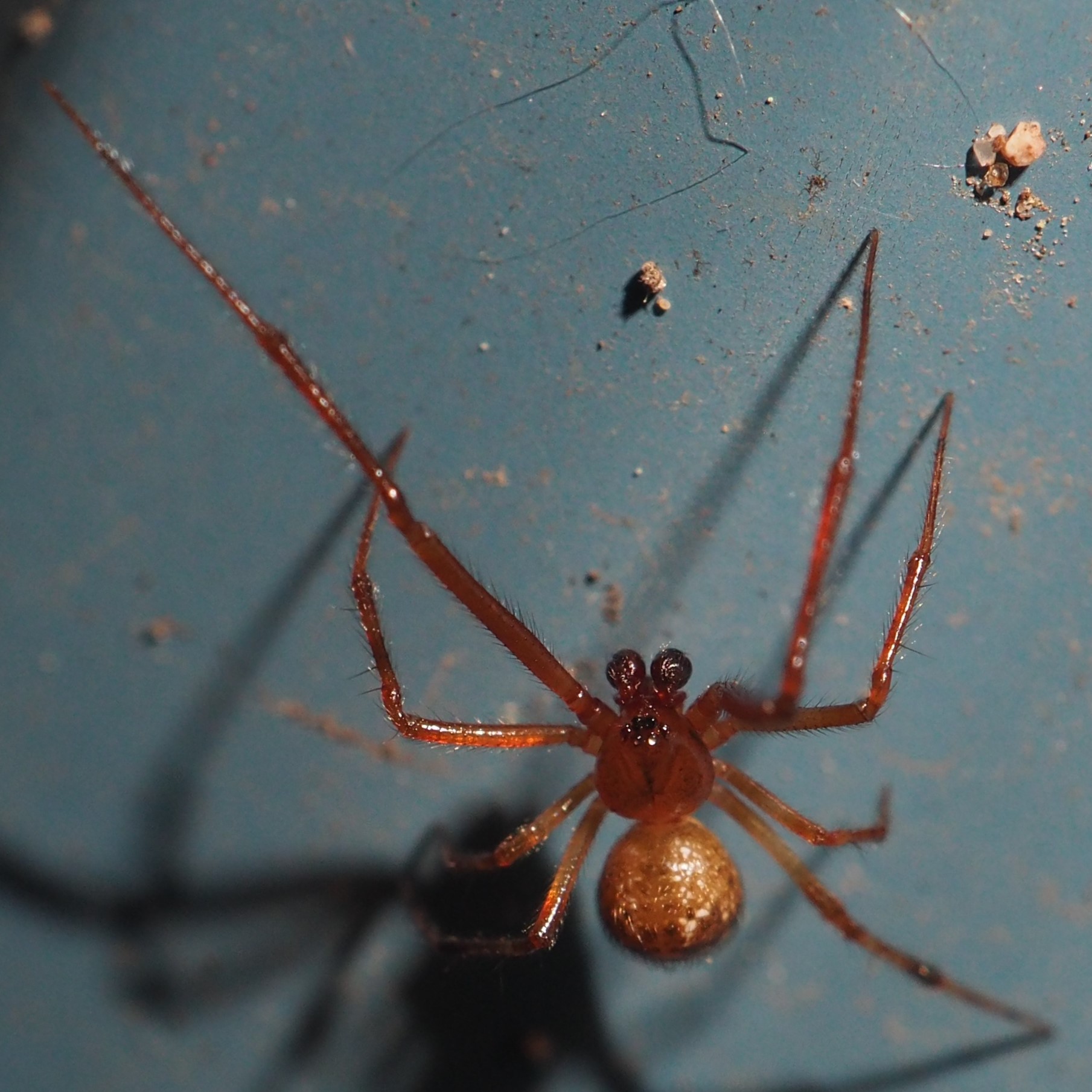
Here is Euryopis funebris, one of the Spiders that lay their eggs in plain view along the bottom edge of a panel.

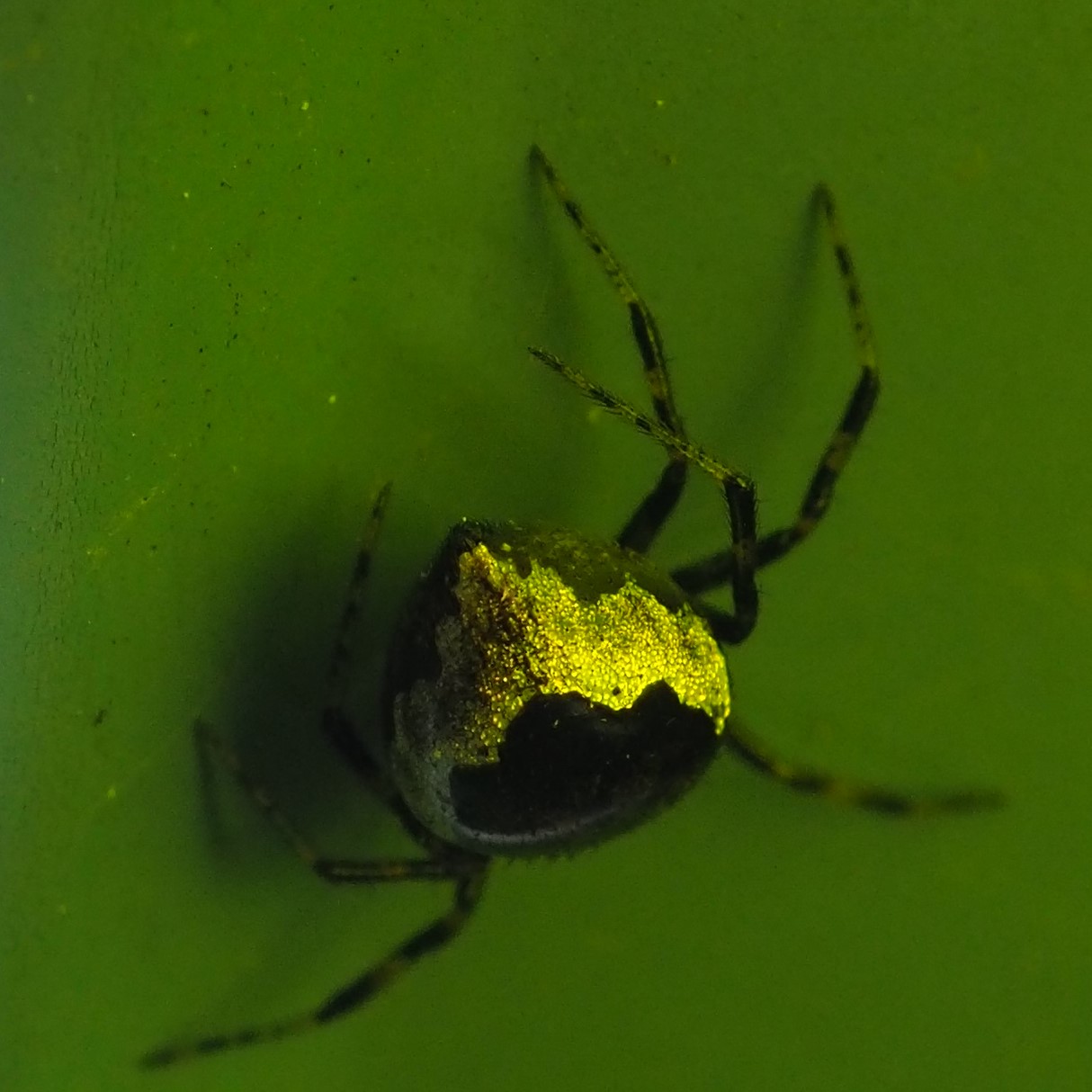
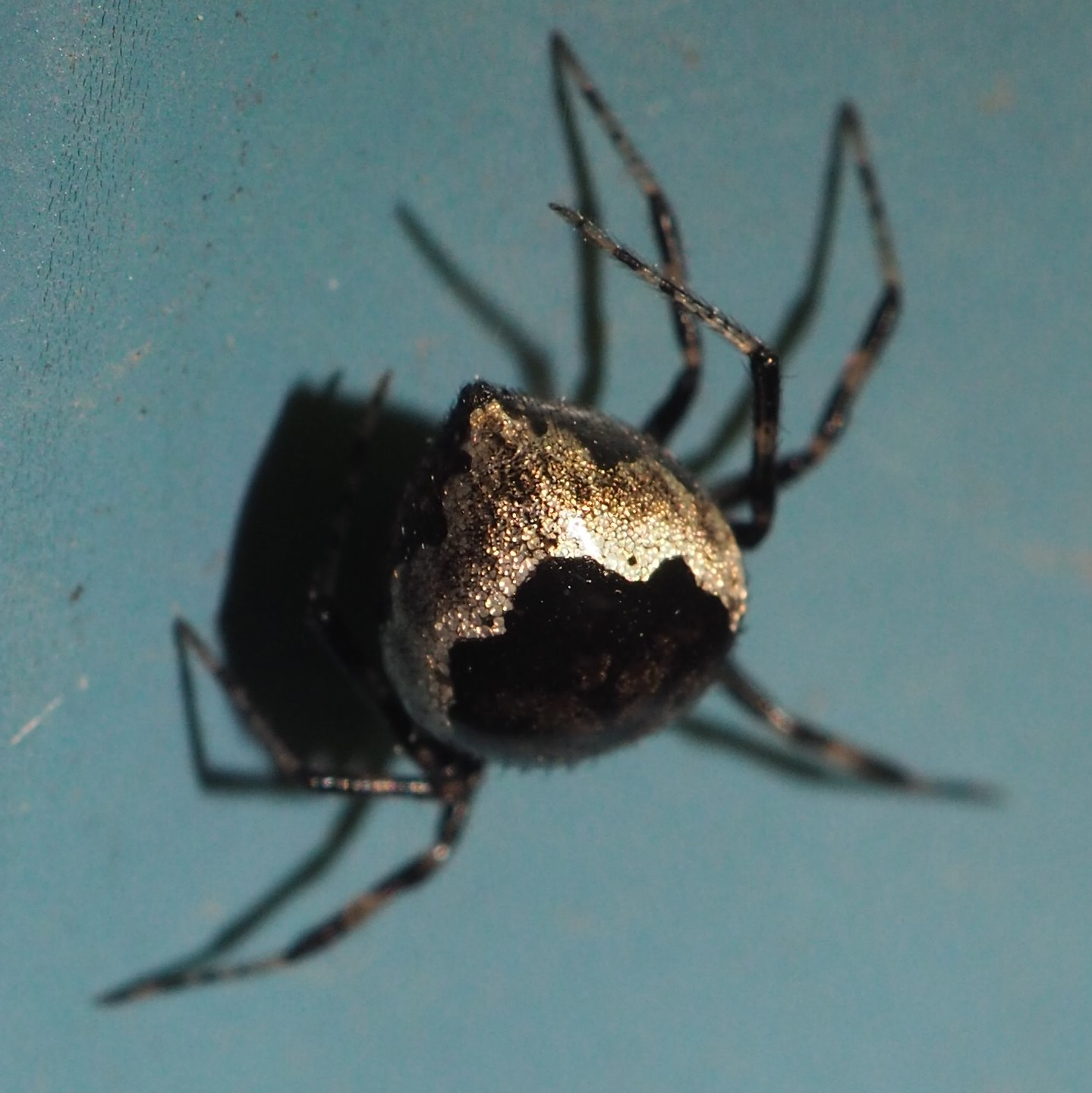
My favorite of all the Spiders - Mimetus (probably puritanus). I like the spooky faces they seem to make on their abdomens. Picture 1 shows a male - note the humongous pedipalps - while pictures 2 and 3 seem to be females. Note the ornament that would be a "tie" under the spooky face. In picture 1, it seems to be a bit ragged, but not in the other two photos. I'm guessing that the shape of the "tie" is a clue as to the sex of the Spider. Or is it a trick of the light?
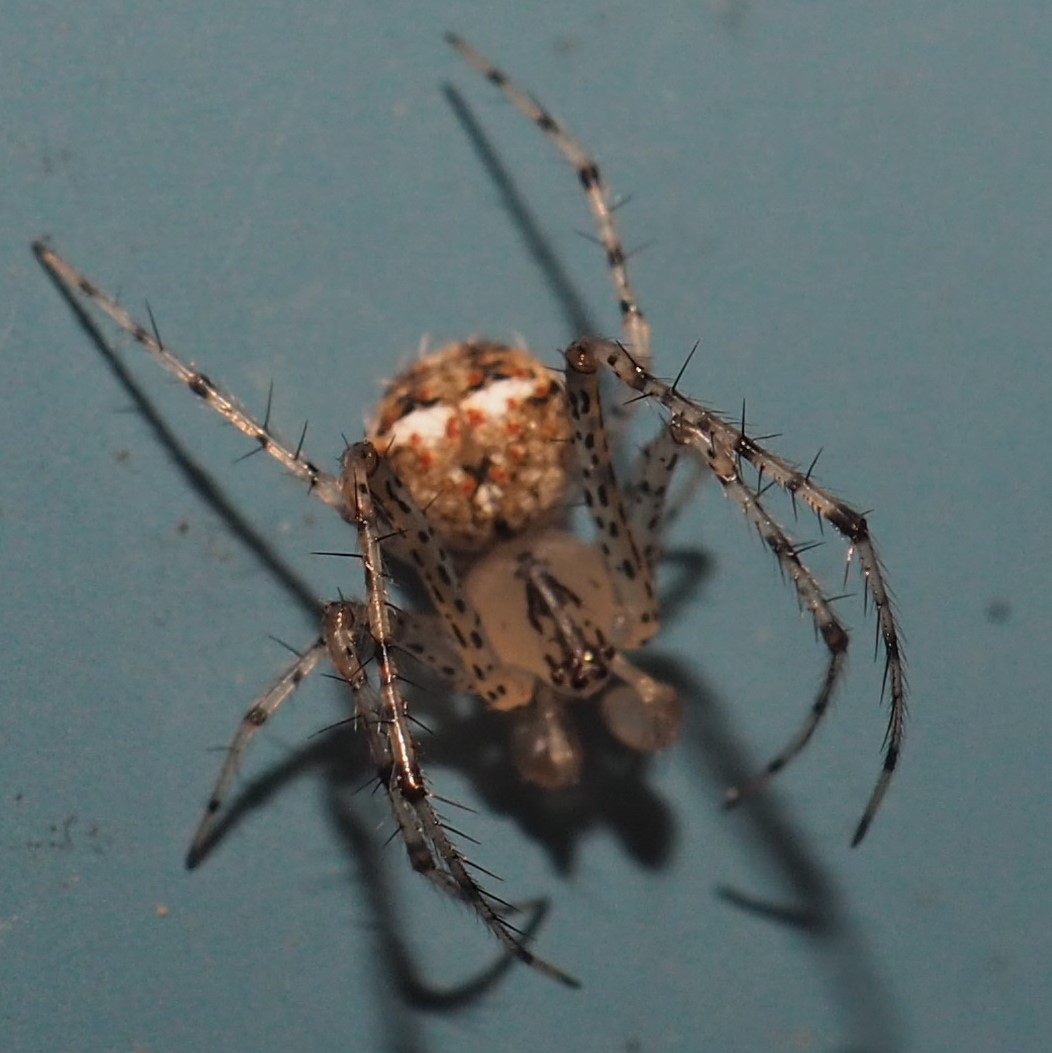
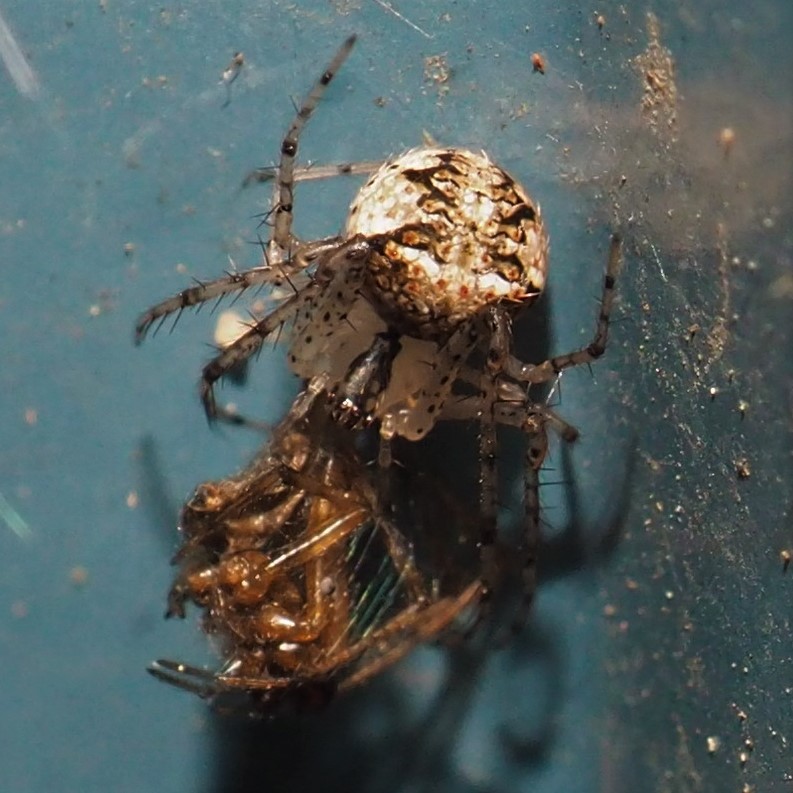
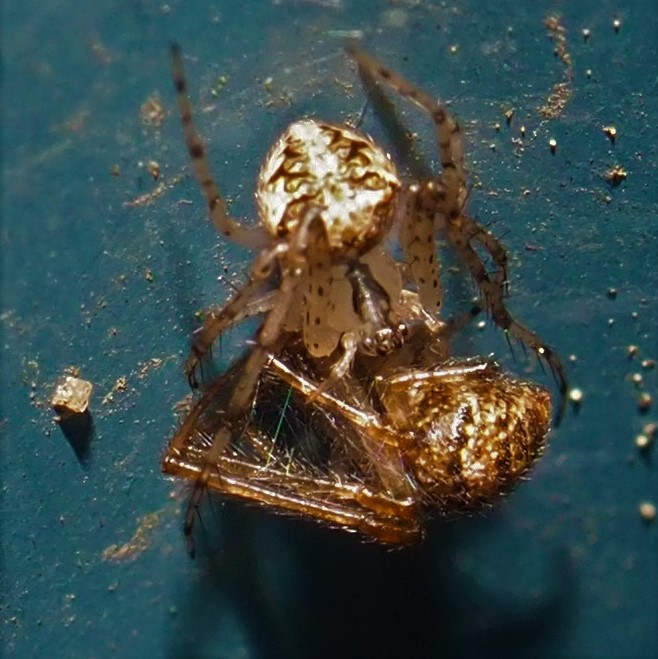
Hanging above the Goutweed is this Orchard Orbweaver, its colors almost at a peak. Next, the lovely Brotherly Ground Crab Spider, a recent comer to this yard or to my eyes. Third is a mystery so far.
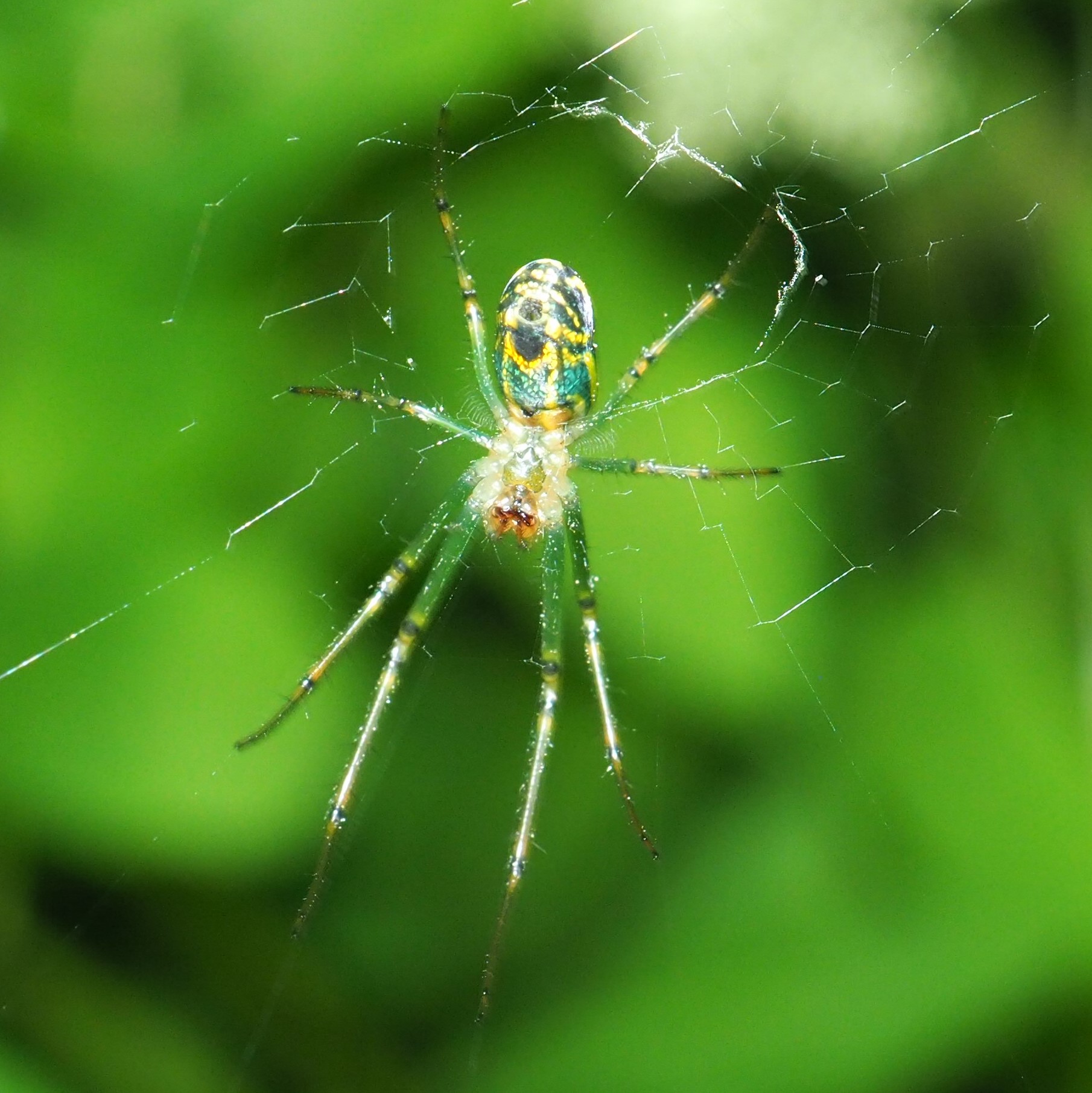
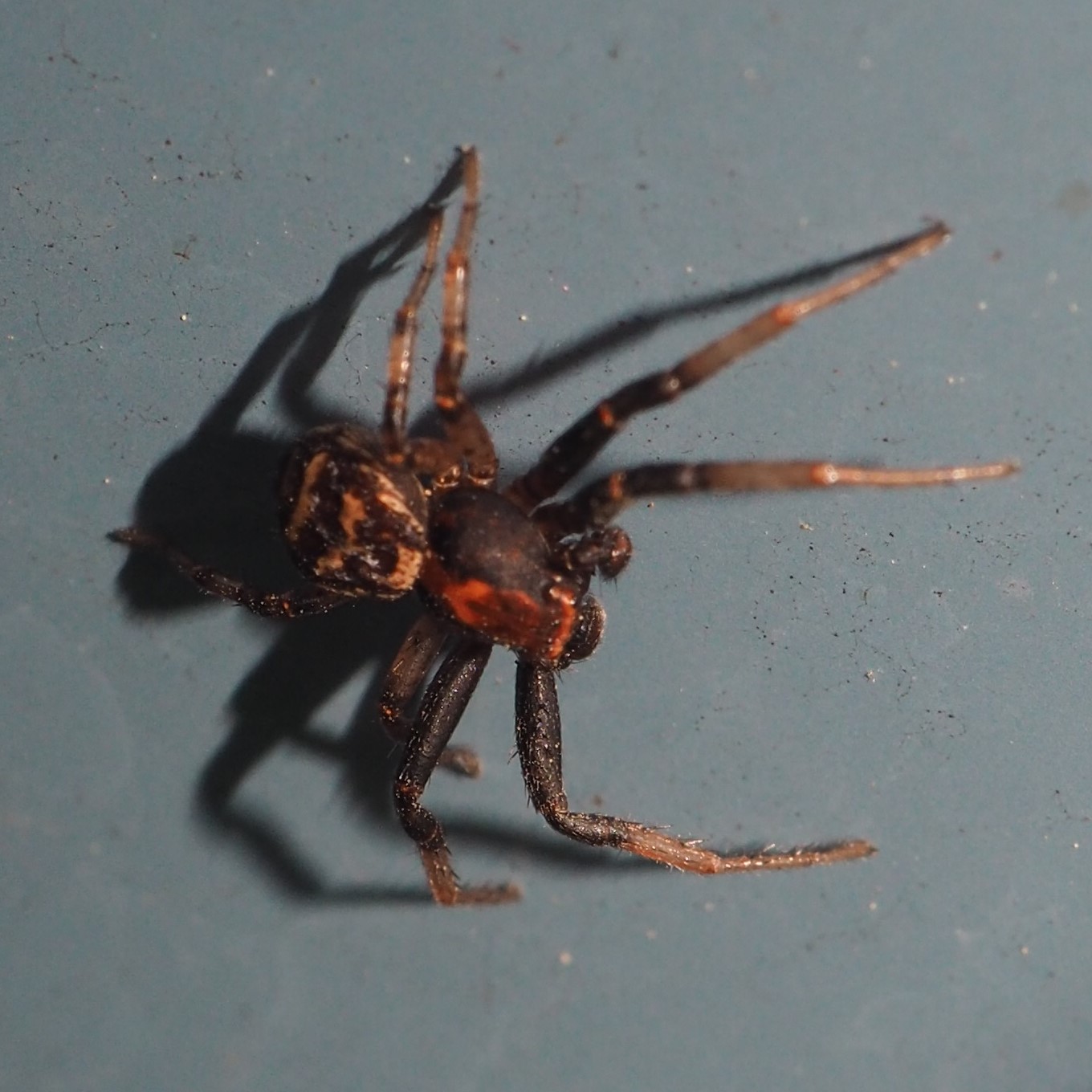
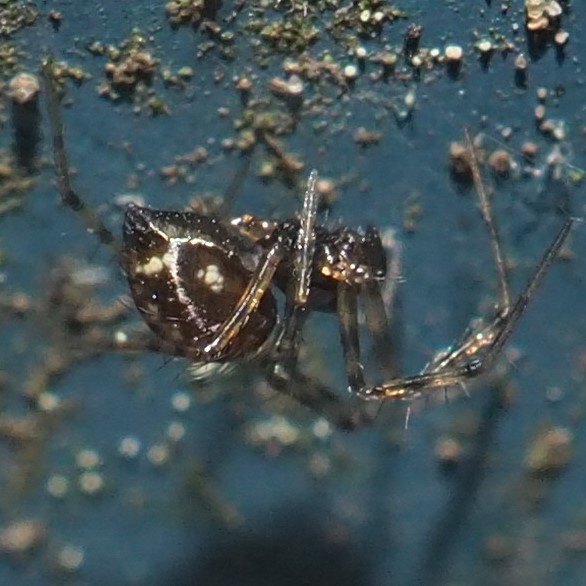
A few more mystery Spiders. The third may be in genus Grammonota, although I usually see them in the Winter months.
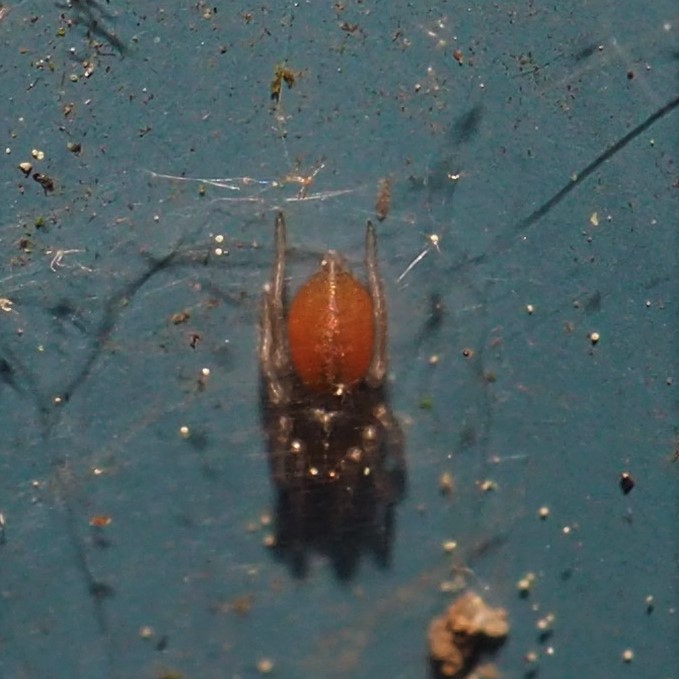
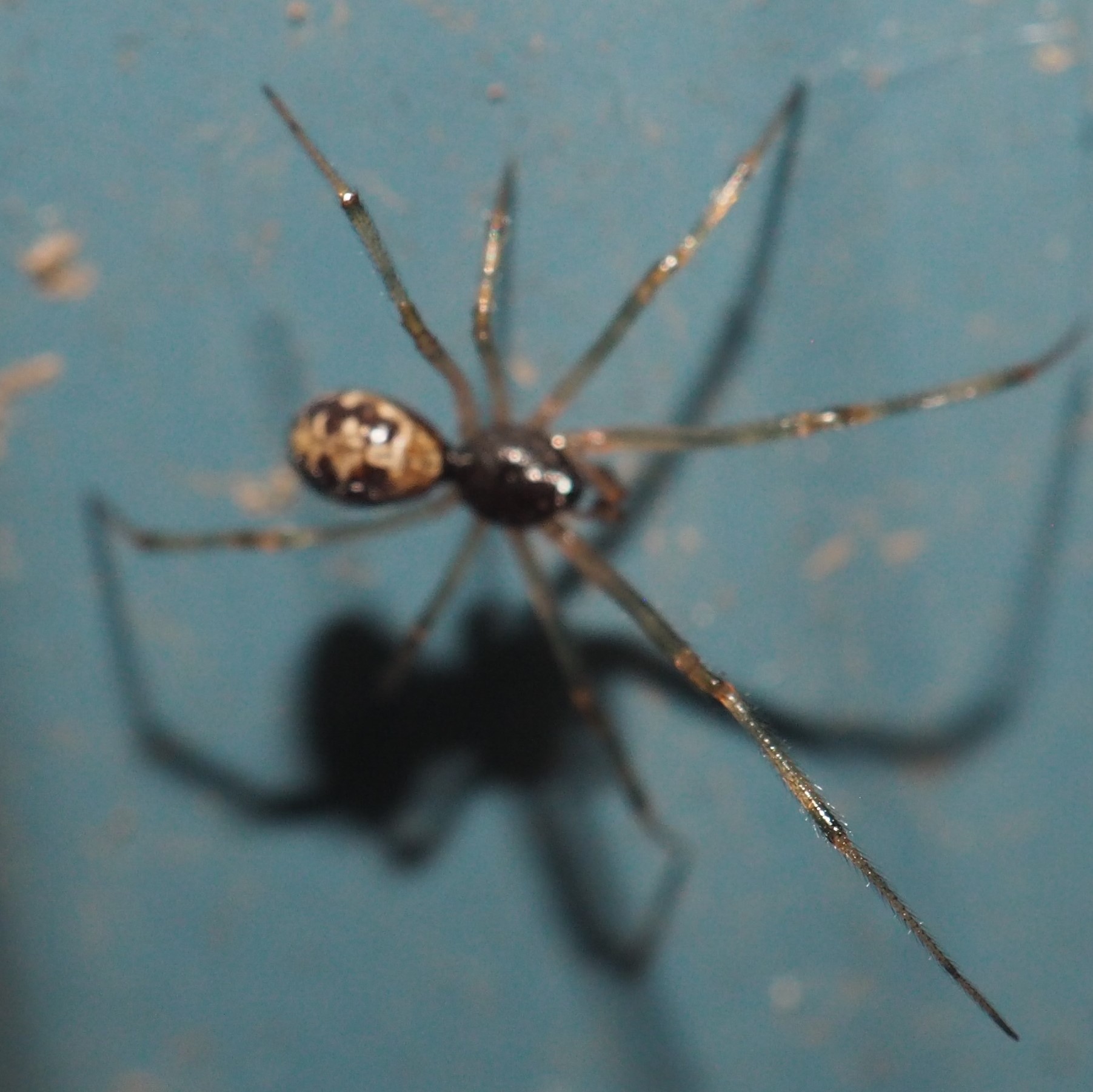
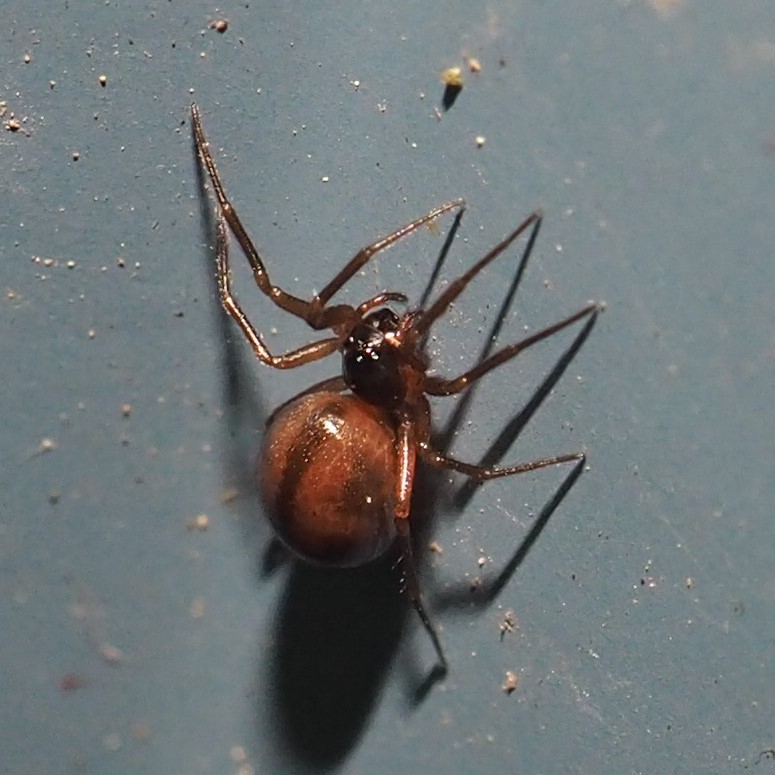
The Goutweed really drew out a few new things. Here are a couple of Mites. First is some kind of Whirligig Mite found on the Goutweed. The second one was found in the north weed patch. Image 3 is of a Millipede on the Wall.
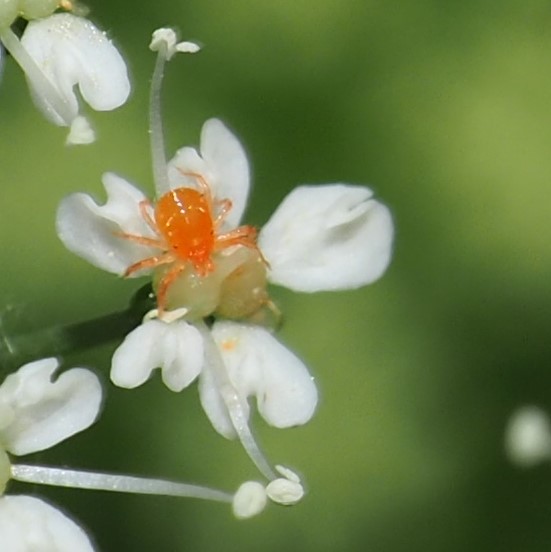
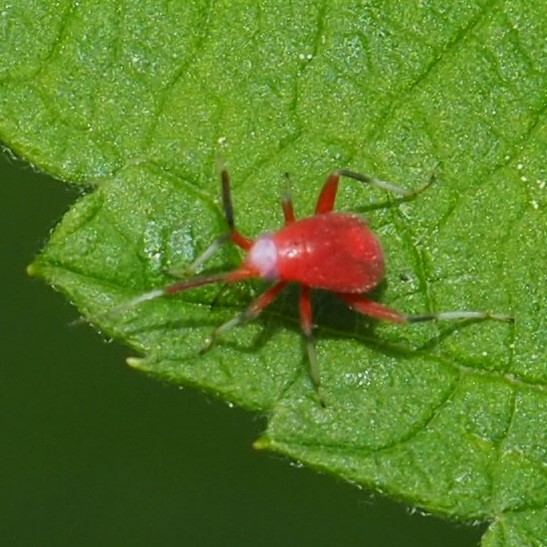

I have saved this baby for the last - it is a tiny baby Mantis, about a half-inch long, and was hiding in plain sight in the North Weed Patch.


Well, Friends, thanks for dropping by to see what changes are taking place in this microcosmos of the Natural World. Thanks for caring about our Planet and each other. Your letters keep me so happy. I hope you have got something you really care about. Please write and tell me about it - if you don't mind seeing your thoughts right here!
I lied. Here is the REAL last picture - of the pond, showing the participants of the recent spate of matings relaxing by their new Lily Flower.
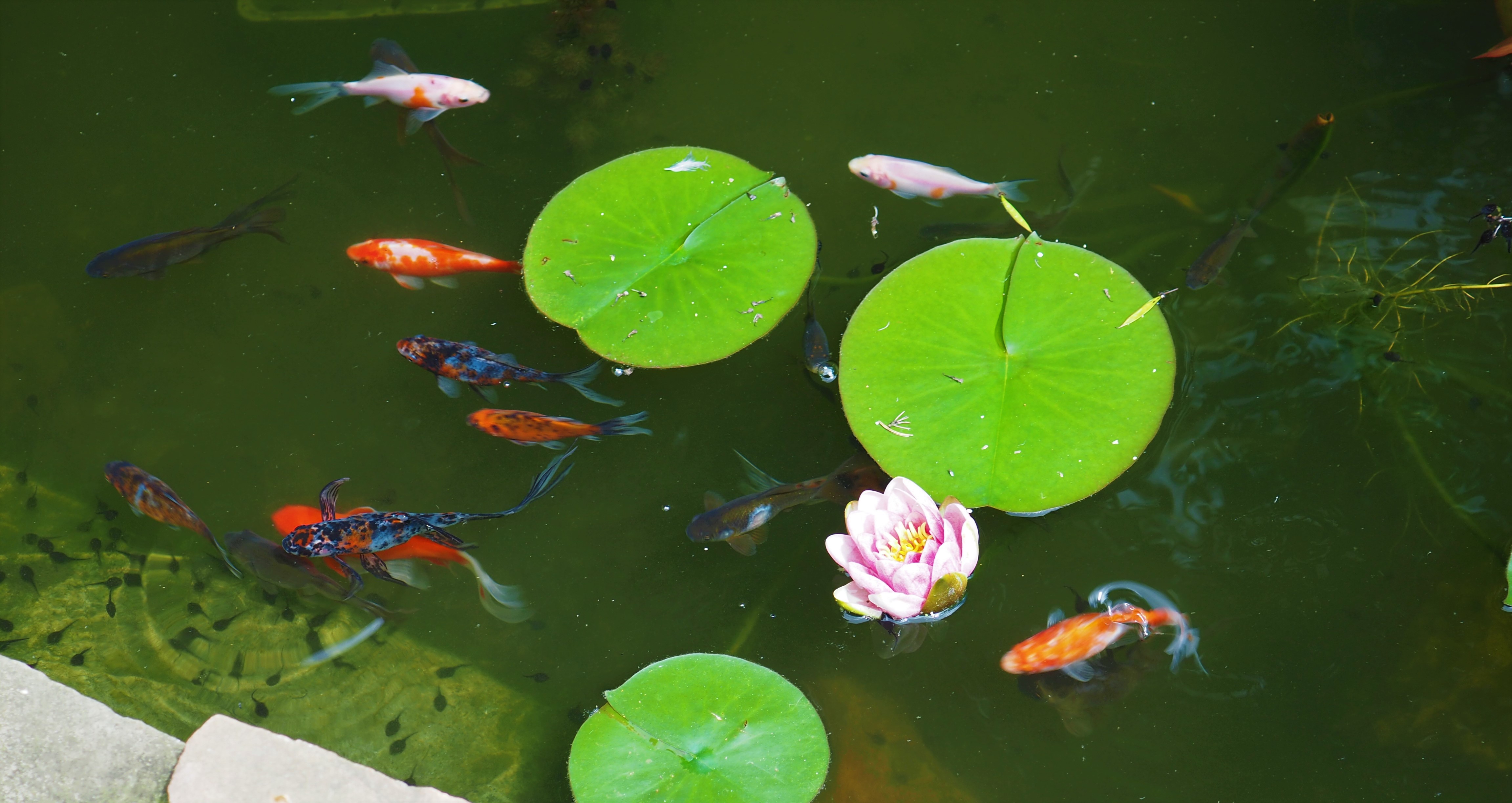
Love, Martha
Back to June 5, 2022
Forward to June 19, 2022
Back to main menu
copyright Martha O'Kennon 2022































.jpg)









































































